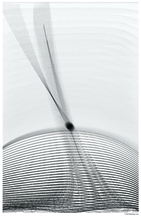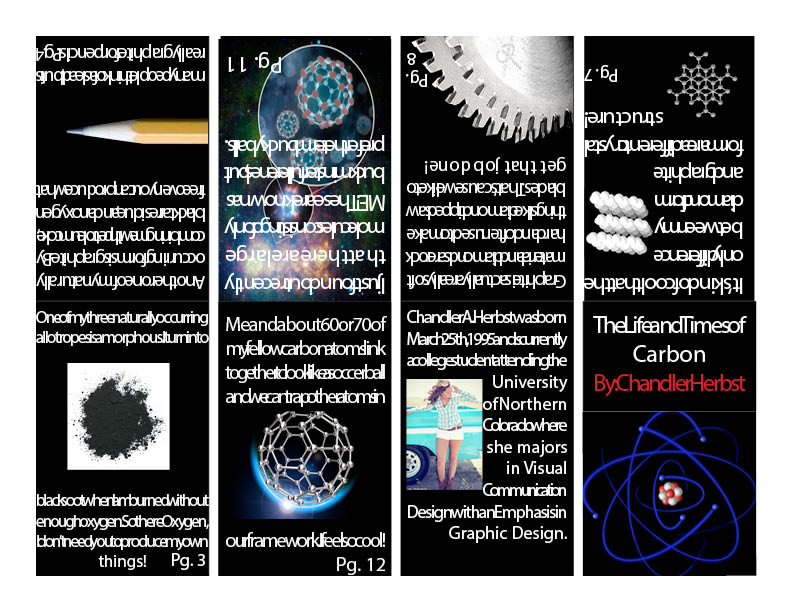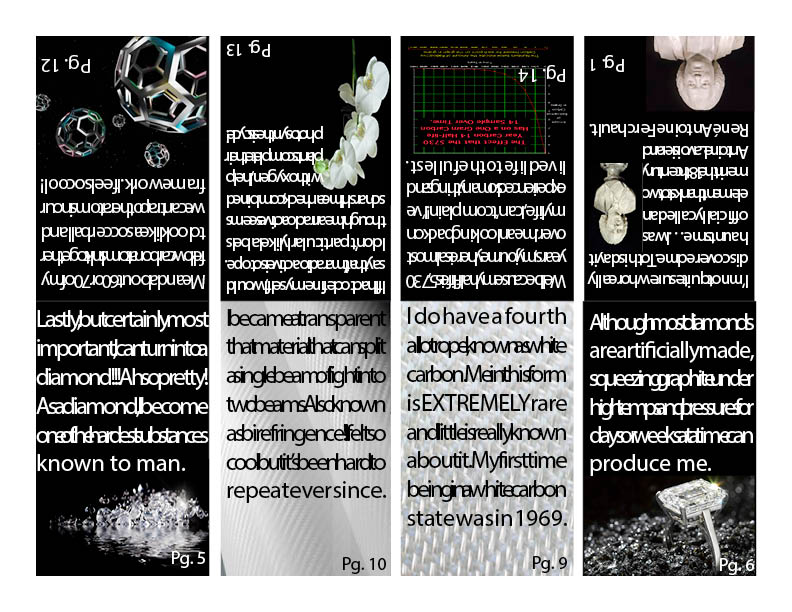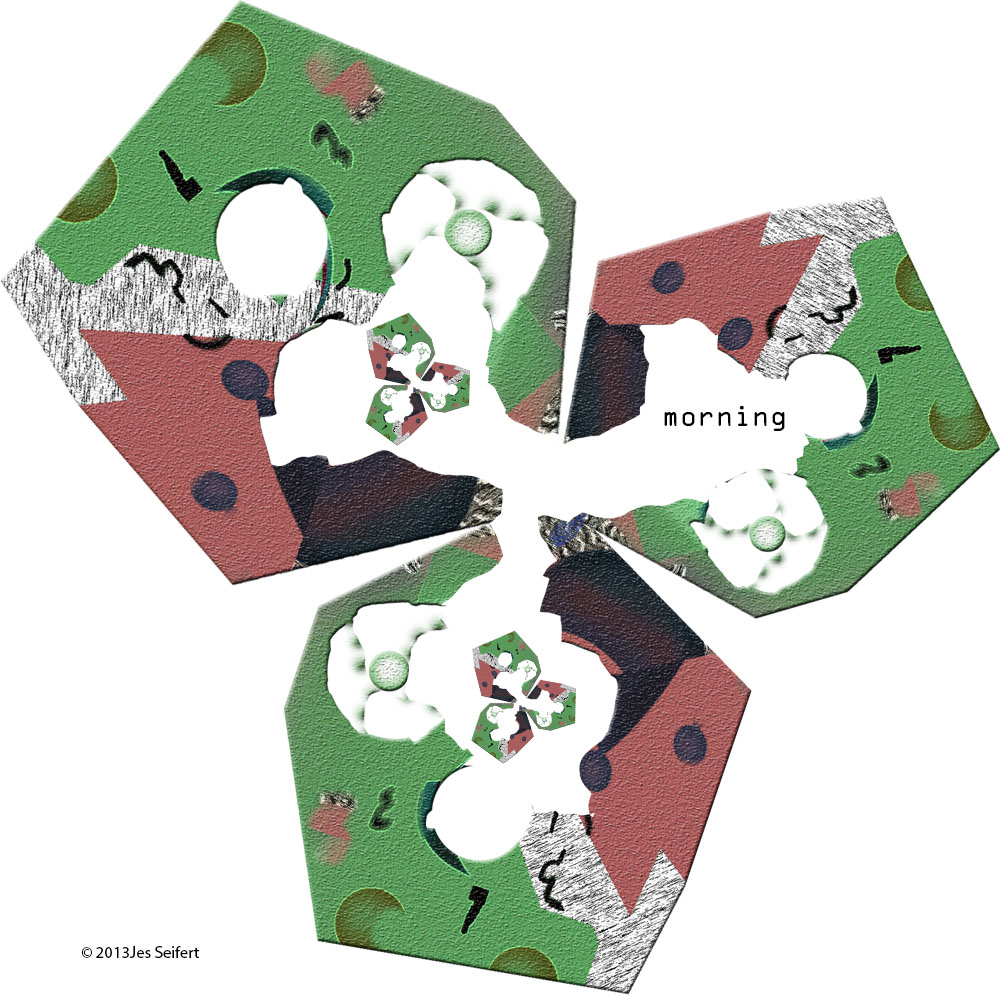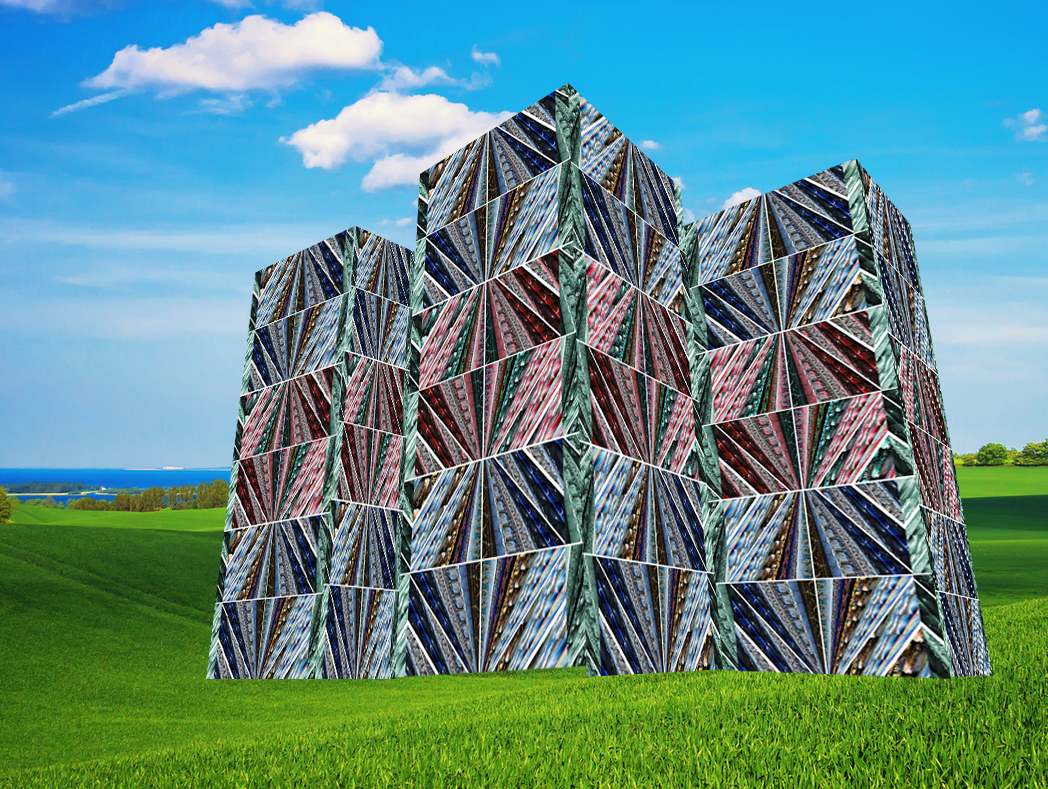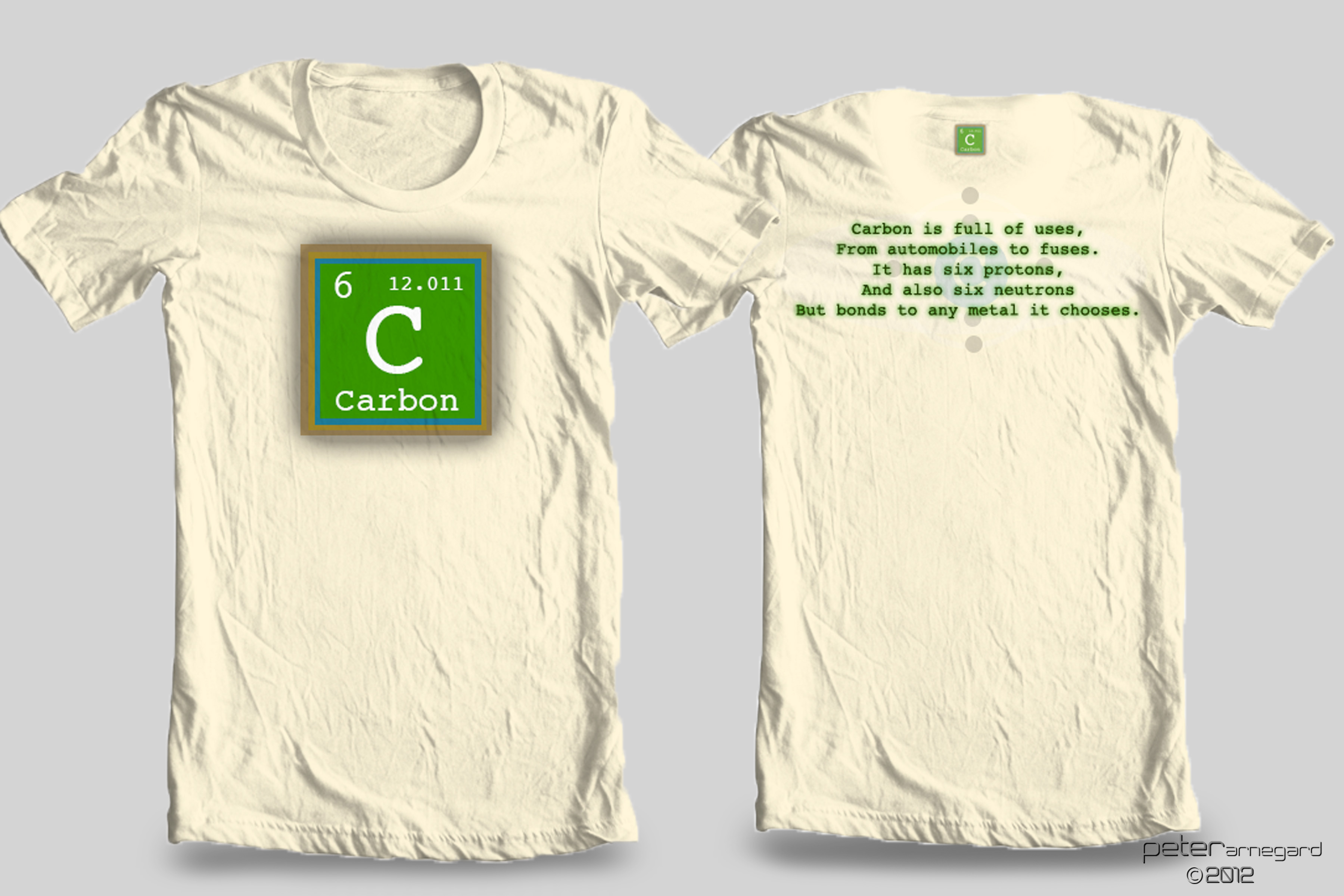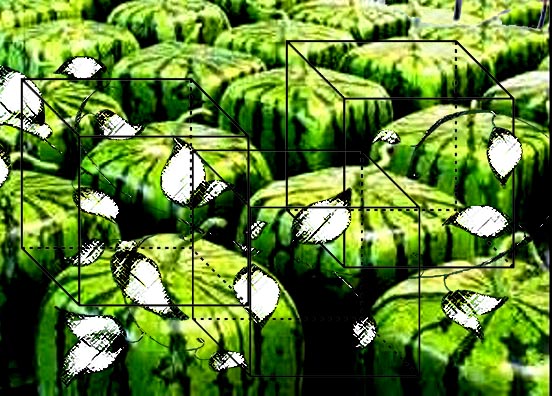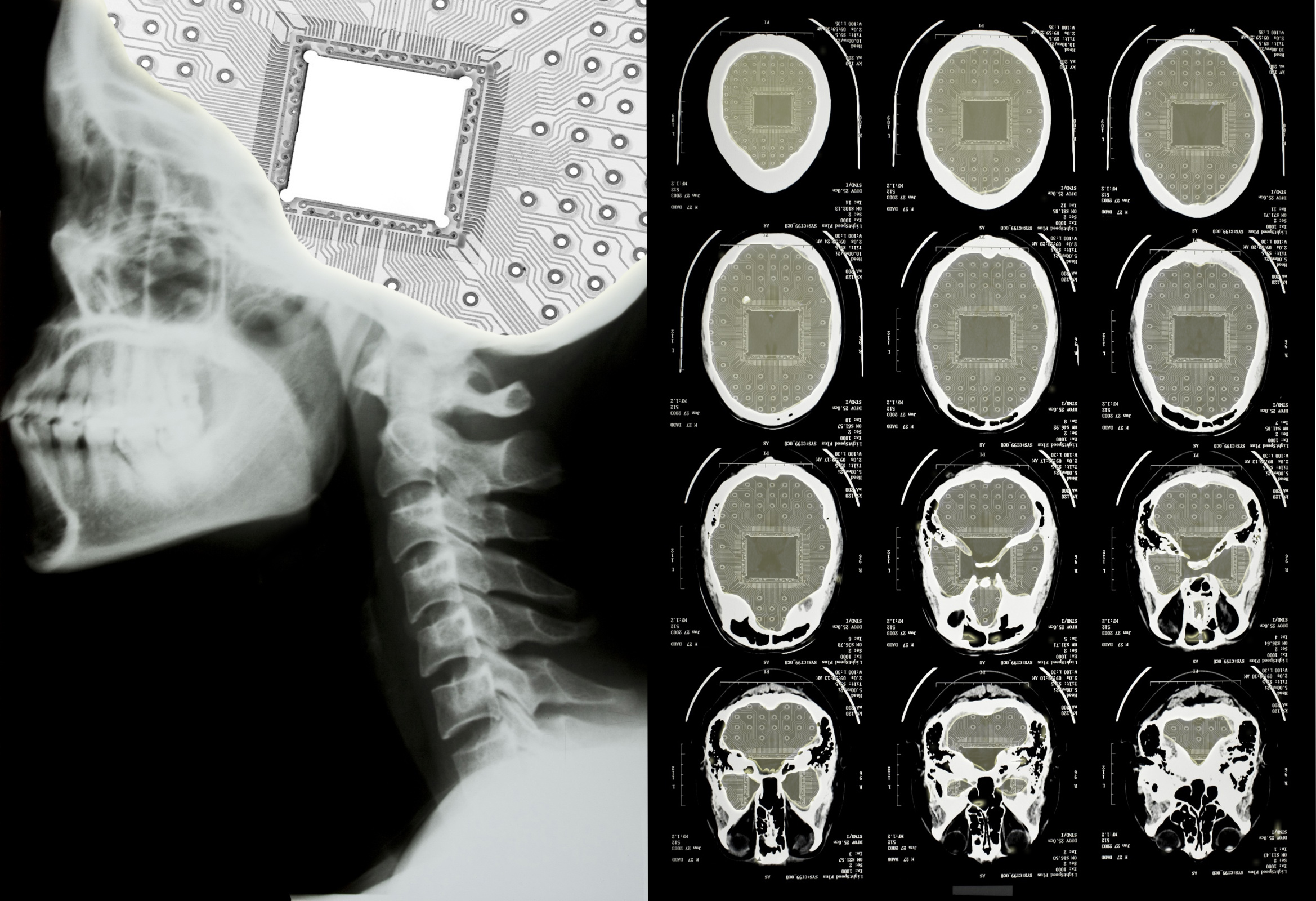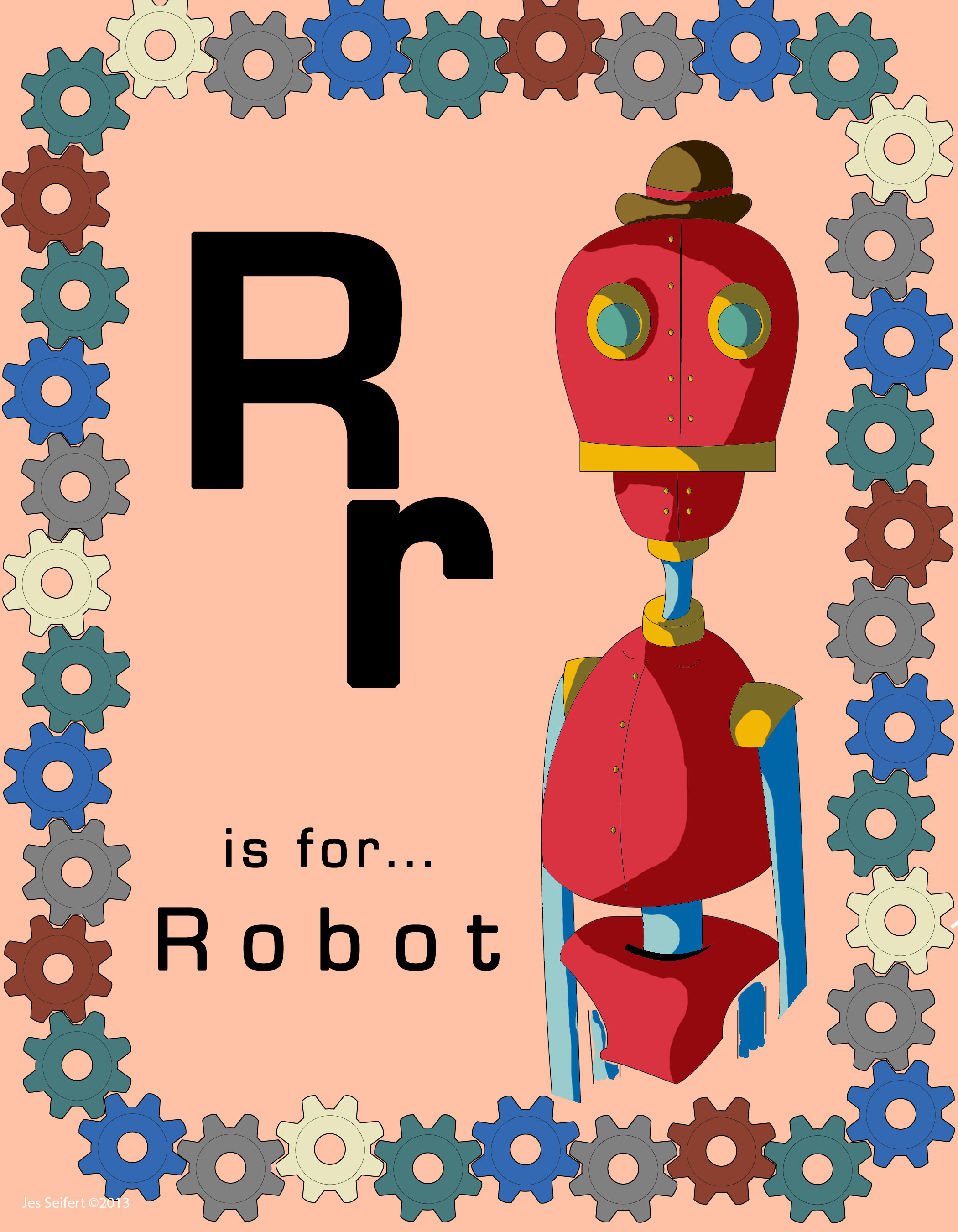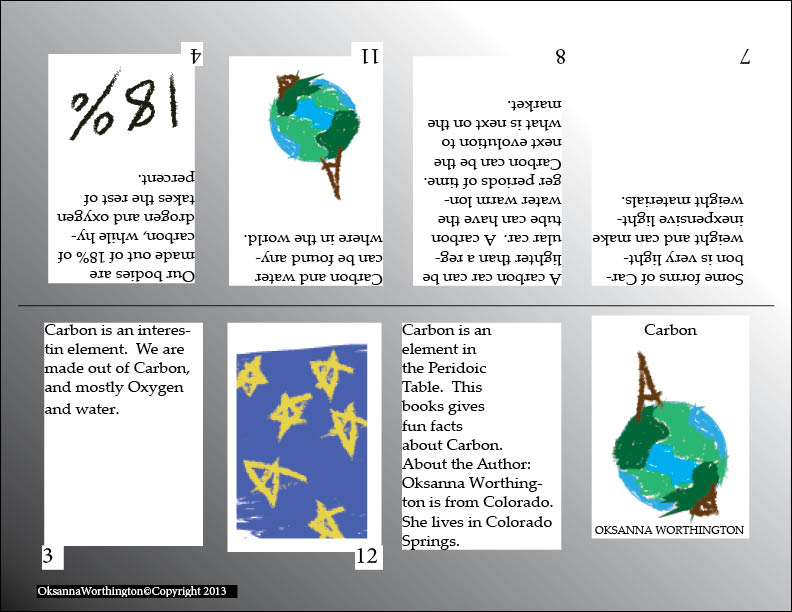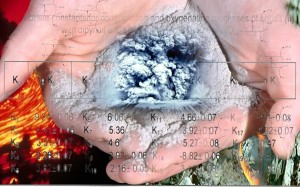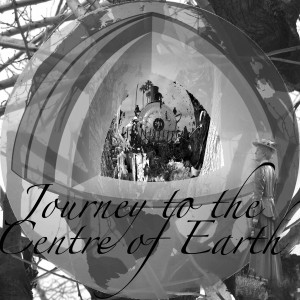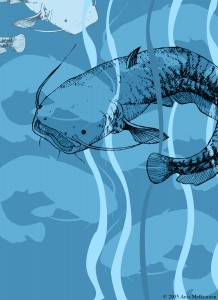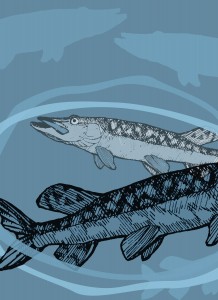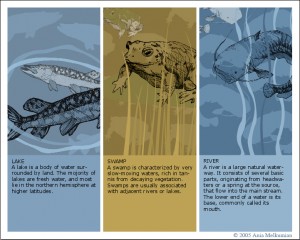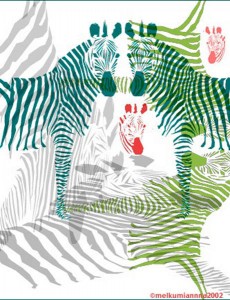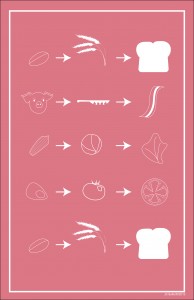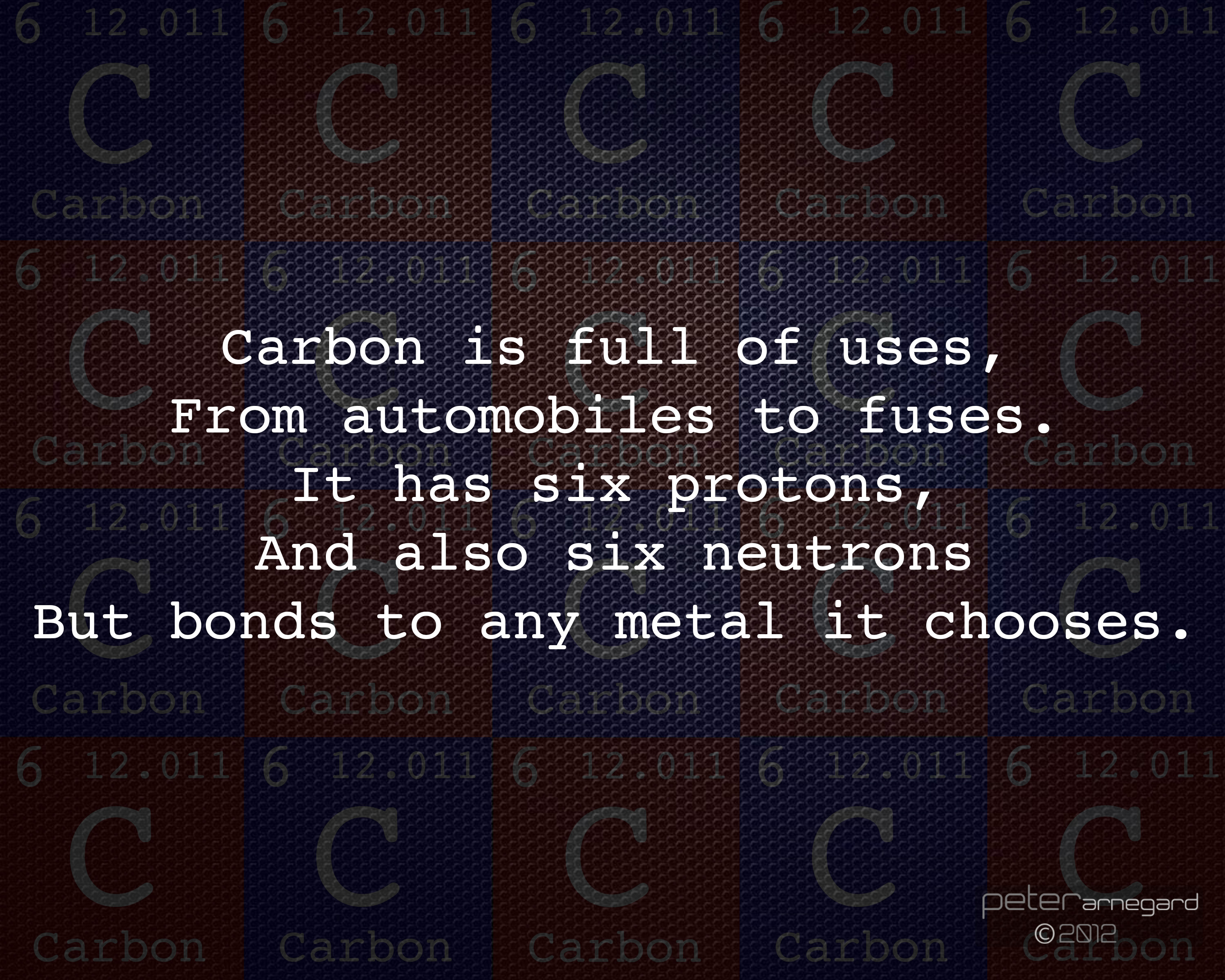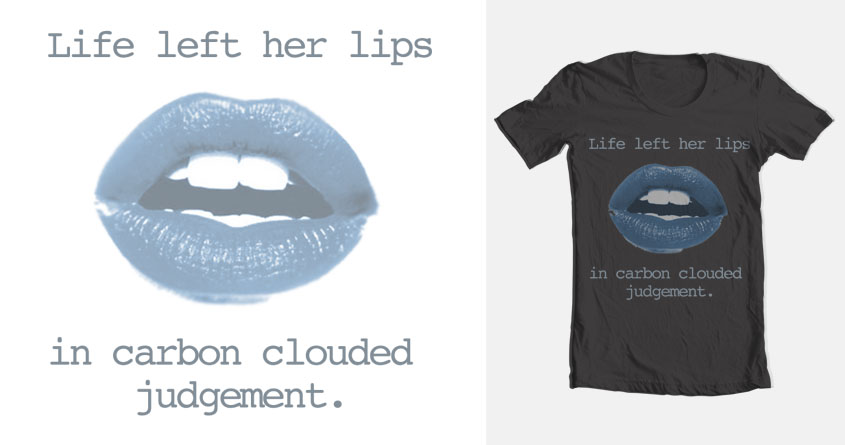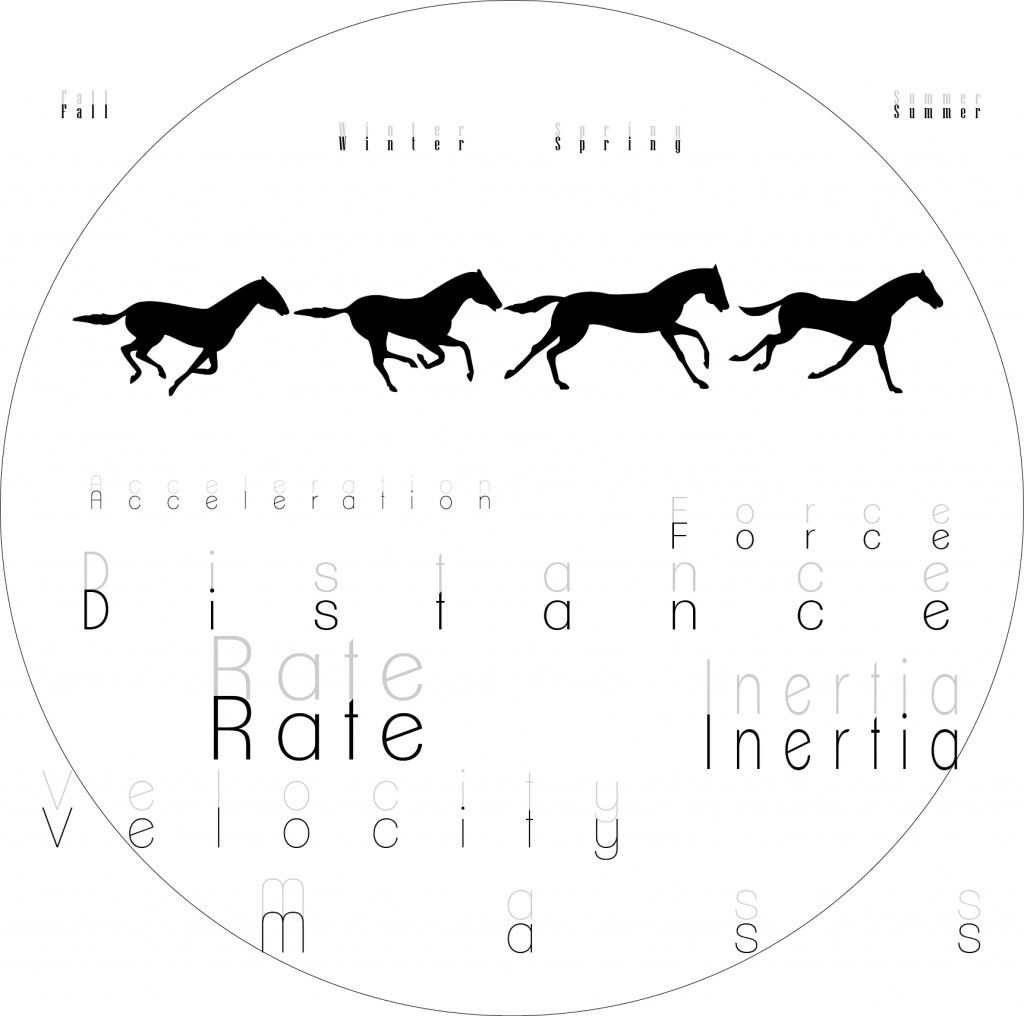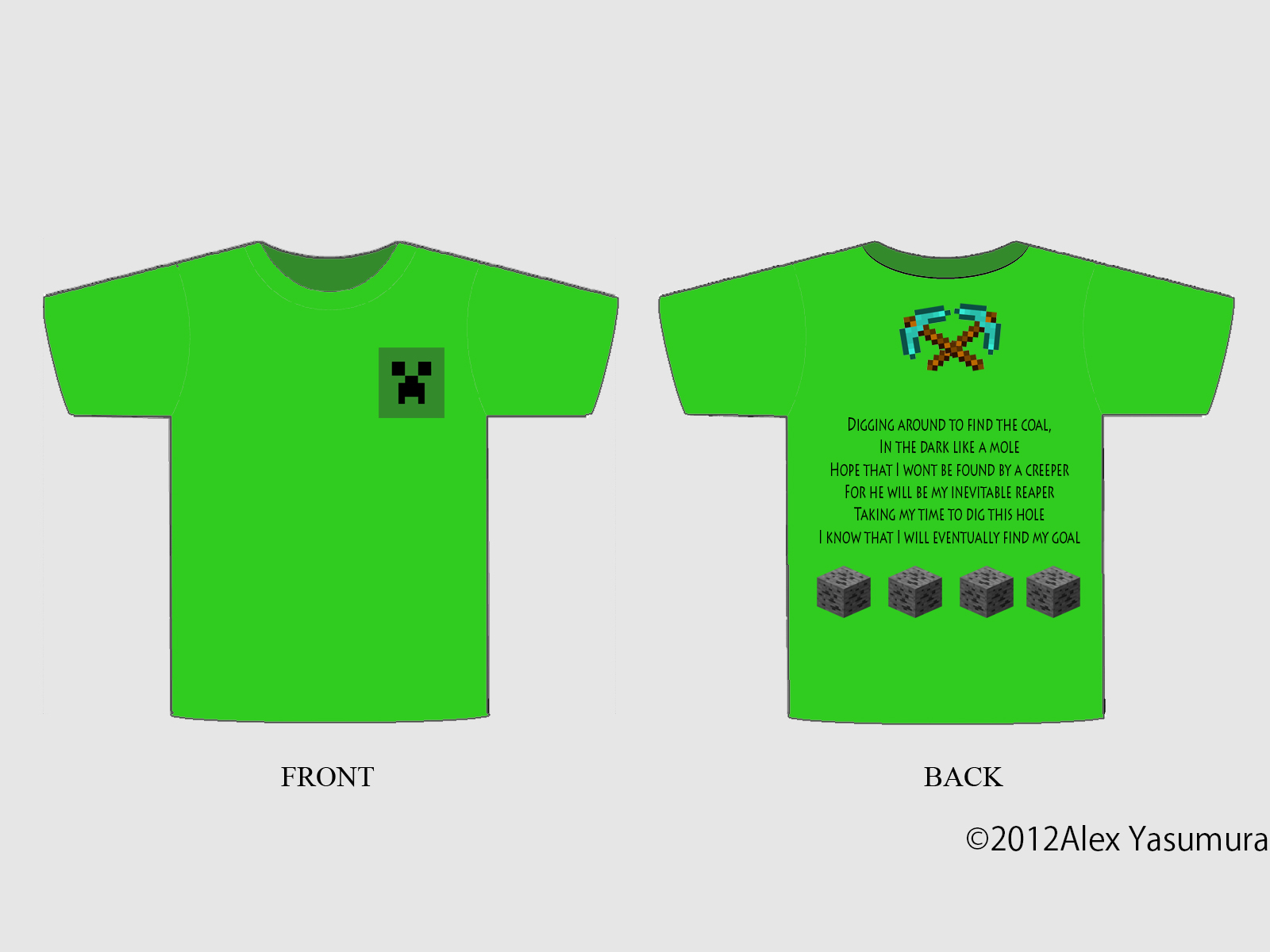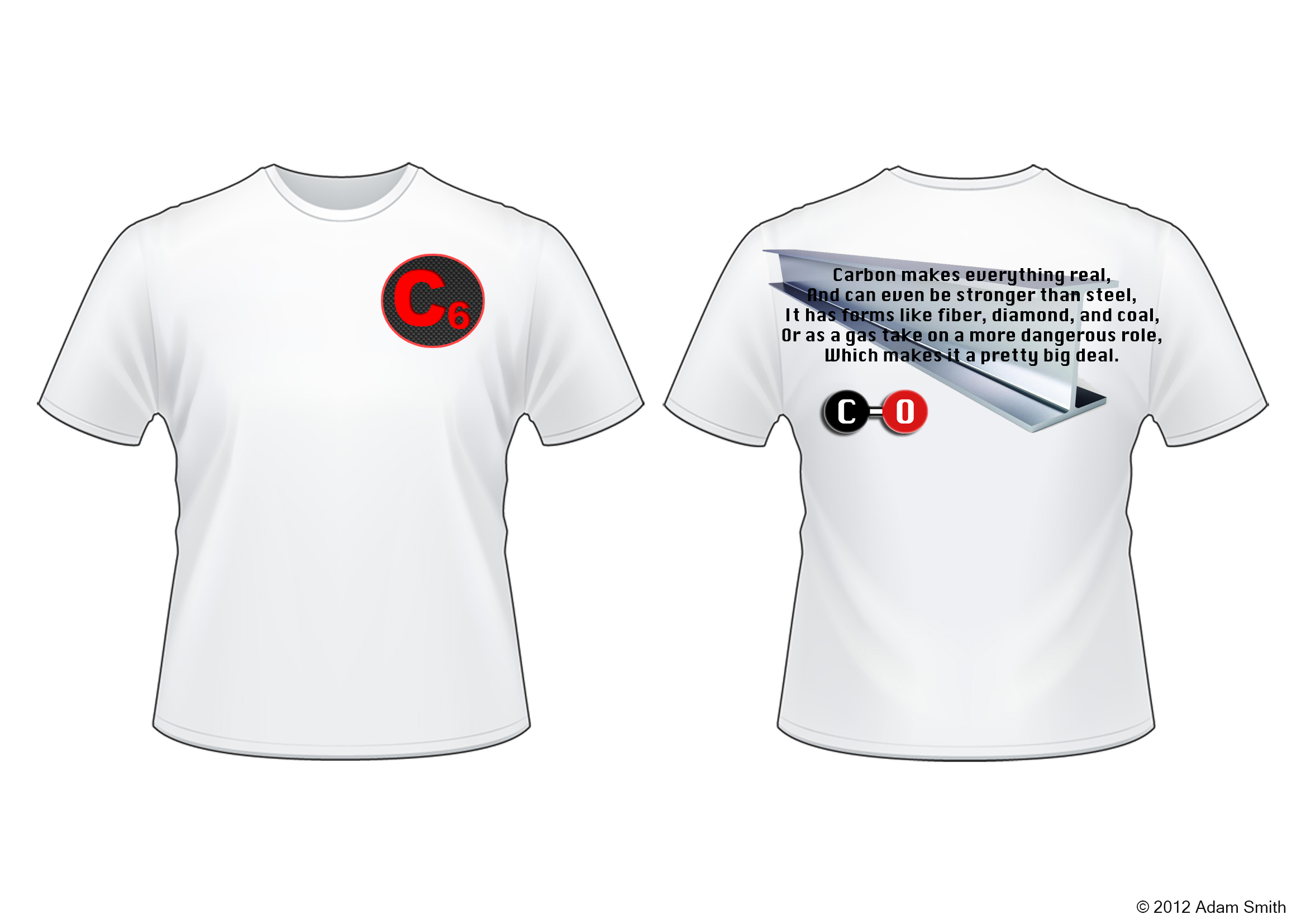Carbon
An Interactive Resource Library of Carbon, Media, Science and Art
About Carbon
Carbon: a gem, a molecule,
and a heart of nanotechnology
This website is inspired by carbon and enhanced by digital technologies. It tells about carbon, related habitats, and technologies seen from the scientific, artistic, and educational points of view. It is meant to support the understanding and interpreting nature- and science-related concepts. Visual presentation of the themes and related information about carbon explores:
– Carbon as a mineral: coal
– Carbon as a molecule
– Carbon as soft matter, and biologically inspired models for practical computing.
Forms of Carbon – Carbon allotropes
Carbon Isomers
Isomers of carbon compounds may have the same molecular formula but different arrangements of atoms in a molecule. There may be also isomerism of atoms, when they have the same atomic number and mass but differ in the energy states. Carbon molecules with one, two, or three atoms of carbon (such as methane CH4, ethane C2H6, or propane C3H8) have only one possible arrangement of the bonding atoms. Molecules with a longer carbon chain (such as butane and isobutene) may have more than one possible configurations of a carbon skeleton: one carbon atom may be branched in the middle of the three-carbon chain. The resulting two isomers: butane with a straight-line carbon chain and isobutene with a branched carbon chain would have the same formula C4H10 but they have different physical properties: melting points, boiling points, densities, and heats of formation. Longer chains of carbon produce more structural isomers with the atoms arranged in a different order.
Carbon Allotropes
Carbon exists in several physical forms with different molecular configurations, which are called allotropes. Physical properties of carbon’s allotropic forms vary. Carbon as a chemical element has eight different structural forms (allotropes); four of them are common:
– Diamond, whose atoms make a lattice of triangular, often pyramids
– Graphite, a lattice of forms with six straight sides and angles
– Amorphous carbon, such as coal, without clearly defined form or structure of its particles. Many times amorphous minerals change under high temperature and pressure into metamorphic rocks such as kimberlite – an igneous rock containing diamonds, or granite.
– Graphene (a single layer of graphite that has extraordinary electrical, thermal, and physical properties).
Graphite
Carbon as graphite is the softest of natural substances. Natural graphite may be crystalline flake graphite that forms planes of cyclic, with atoms of carbon arranged in a honeycomb lattice, amorphous, and lump graphite. Natural graphite, mined and then refined, may contain up to 98% of carbon. It is opaque, black, and conducts electricity well so is used, for example in arc lamp electrodes. Natural and synthetic graphite is a good dry lubricant: despite being in the solid phase it reduces friction between surfaces that are sliding against each other. Graphite, which was earlier called black lead or plumbago has been used in steelmaking, brake linings, as a recyclable anode in batteries, as a lubricant in air compressors, railway track joints, ball bearings, for lining molds for cannonballs, and also in food industry. Graphite has been used for decorating pottery since the 4th millennium B.C. Synthetic graphite serves as a matrix in nuclear reactors. Carbon nanotubes reinforce plastics and thus many commercial articles.
Diamond
Carbon was known in ancient civilizations, e.g., Egyptian (existing from about 5,000 years) and Roman (lasting about 2,500 years), in the forms of soot and charcoal. Diamonds were known in China about 2500 BC. Carbon as diamond has the highest thermal conductivity of all materials, poor electrical conductivity, is transparent, and the hardest of natural substances. Diamond is hard and coarse, so it’s highly abrasive. Carbon atom in a diamond has covalent bonds with four other carbons; it means each carbon atom bonds to four other carbon atoms, which makes tetrahedrons that form hexagonal rings; this makes diamond extremely strong. Of the mined diamonds, 80% (20 tons annually) are for industrial use and are unsuitable as gemstones; additionally from the 1950s, 80 tons of synthetic diamonds are produced annually. Synthetic nano crystalline diamond is the hardest material known (Irifune, Kurio, Sakamoto, Inoue, & Sumiya, 2003).
Coal
Coal is usually amorphous, without crystalline structure. Coal and powdery or flaky soot (a product of pyrolysis – decomposing by heat) are amorphous forms of carbon. The coal grades in industry depend on the carbon content and include anthracite (about 90% carbon), bituminous coal (75–90% carbon), and soft, brownish lignite (about 55% carbon, often containing traces of plant structures), to say nothing about brown, soil-like peat (turf).
Graphene
Graphene is a one atom thick membrane, a sheet of carbon atoms arranged in tightly bound hexagons. Graphene is almost unbreakable, tougher than a diamond, and stretchable like a rubber (Palmer, 2012). Graphene was discovered in 2004 by two University of Manchester scientists; a Russian-Dutch scientist Andre Geim and a Russian-British scientist Konstantin Novoselov shared the 2010 Nobel Prize for physics for studying behavior of this one atom thick sheet of carbon (Nobleprize, 2010). According to Geim & Novoselov (2007), graphene is a flat monolayer of carbon atoms tightly packed into a two-dimensional (2D) honeycomb lattice, and is a basic building block for graphitic materials of all other dimensionalities. It can be wrapped up into 0D fullerenes, rolled into 1D nanotubes, or stacked into 3D graphite. Geim and Novoselov were praised for playfulness of their approach that involved producing flakes of graphene using sticky tape: they extracted the material from a piece of graphite that can be found in ordinary pencils using adhesive tape, and repeating the tape-trick until they got miniscule flakes of graphene.
Three million sheets of graphene loosely held together on top of each other produce 1mm of graphite. Scientists are able to fabricate molecule-scale structures and devices in graphene with atomic precision (Russo & Golovchenko, 2012). Gardener & Golovchenko (2012) demonstrate that the ice-assisted e-beam lithography can be used to pattern very thin materials deposited on substrate surfaces. The procedure can be performed in situ in a modified scanning electron microscope. A low energy focused electron beam can locally pattern graphene coated with a thin ice layer. Moreover, photons, x-rays generated by atoms may also come back (which is used in X-ray spectroscopy). The scanning probe tools use the nanoscale probe (a small, sharp tip on the end of a lever that is dragged across a nanoscale object) for the scanning probe microscopy. Nanoscale beams or probes interact with a nano material generating signals that can be processed by a computer into pictures.
Examples of such tools are the atomic force microscope AFM that measures forces between atoms; and scanning tunneling microscope STM that uses quantum mechanical tunneling between atoms of the probe and atoms on the scanned surface.
The nano-scale tips on scanning probe microscopes (SPMs) allow us to even “see” atoms (PennState modules, 2009). Atoms on the probed surface may be arranged by an STM into a quantum corral, which is about 14 nm in diameter. Christopher Lutz, Donald Eigler, and Michael Crommie demonstrated for the first time the quantum corral in 1993 by using an elliptical ring of iron atoms on a copper surface (Ball, 2009). The STM tunneling current can be turned by a computer into a false color STM image of the quantum corral (PennState modules, 2009).
A carbon nanotube is a molecule of carbon in form of a hollow cylinder. A carbon nanotube has a diameter of around one or two nanometers; they can be seen using a scanning tunneling microscope. One nanometer (nm) is one billionth, or 10−9 of a meter. Typical carbon-carbon bond has the length about 0.12-0.15 nm; a DNA double helix has a diameter around 2 nm. Nanotubes and fullerenes are present in structures such as inorganic carbon, DNA, and cell membranes. Both carbon nanotubes and graphene products (such as graphene foams, nanowires, sieves, graphite nanoparticles, or porous carbon) are offered for sale online.
Carbon nanotubes have the nanoscale cross-section areas but they may be many micrometers up to centimeters long. This shapes cause unusual chemical bonding and physical properties, such as great strength: carbon nanotubes are the strongest known materials. Carbon nanotubes may form single wall and multi-wall structures. Nanotube sheets are 250 times stronger than steel and 10 times lighter; they are also stretchable. Many magazines quoted in 2008 James Hone, Columbia University saying, “It would take an elephant, balanced on a pencil, to break through a sheet of graphene the thickness of Saran Wrap [cling film].”
As claimed by Richard Van Noorden (2011), “According to the Nobel Prize committee, a hypothetical one-metre-square hammock of perfect graphene could support a four-kilogram cat – the hammock would weigh 0.77 milligrams, less than a cat’s whisker, and would be virtually invisible.” The cylindrical structures of carbon nanotubes have exceptional electrical and thermal properties along with superior mechanical strength. The fabrication of carbon nanotubes serves a variety of applications. Carbon nanotubes are used in the production of memory chips, batteries, and many consumer products such as tennis rackets, badminton rackets, bicycles, compounds to manufacture cars and airplanes, and so forth. Carbon nanotubes distributed on small cement grains provide superior strength of concrete. New methods for producing carbon nanotubes are capable of reducing their price.
The nanoscale world: metric measures
The developments in nanoscale and molecular-scale technologies allow researching the nanoscale objects: liquid crystals, soft matter, nanoshells, and carbon nanotubes. In order to discuss soft matter and liquid crystals we need to discuss the metric measurements and some metric prefixes (prefixes for other multiples, such as 104, 105, 10-4, and 10-5), as well as metric conversions.
– A macro-scale comprises visible objects with sizes of a millimeter or more
(1 millimeter, 1 mm = 1/1,000 meter – 1×10-3 m)
For example, a human hair is about 10-4 m wide (about 100,000 nanometers wide).
– A micro-scale relates to objects with sizes about a micrometer to about 1/10 of a millimeter
(1 micrometer, 1 µm = 1/1,000,000, one millionth of a meter – 1×10-6 m)
For example, red blood cells may have a size of several µm; bacteria may be about 1 µm large.
– A nano-scale encompasses a range of subjects from about a nanometer to about 1/10 of micrometer
(1 nanometer, 1 nm = 1/1,000,000,000, one billionth of meter – 1×10-9 m).
For example, a virus is about 10-7 m; a DNA is about 10-8 m; molecular structures are about 10-9 m;
– A pico-scale is a size range of single atoms, both found in nature (and represented in the periodic table) and atoms man-made in accelerators for nuclear technology
(1 ångström or angstrom (symbol Å) = 1 x 10-10 meters).
For example, a helium atom has a diameter of about 0.1 nm.
One nano is 10-9 meter; that means one-billionth of a meter. That means the size of a nanometer is to the size of a meter like a marble compared to the size of Earth. Many familiar objects are millions of nanometers big: a human nail on a little finger is about ten million nanometers across and a human hair is about 80,000 nanometers wide. A dollar bill is 100,000 nanometers thick. A small reptile gecko can cling upside down to the pane of glass because it has millions of microhairs on its toes; each hair is split into hundreds of tips 200 nanometers wide, which form nanohairs on its microhairs).
Tools for examining nanostructures
Developments in technology, especially advances in microscopy and spectroscopy (recording how matter interacts with or emits electromagnetic radiation) provide opportunities for discoveries in a nano scale, which in turn cause that new epistemologies evolve allowing us to see the world in a changed way. Tools are needed to determine the size, shape, and physical structure, to know the composition of chemical elements and the physical and chemical properties. Generally, tools are based on electron beams; they produce images using electrons, inform about composition using x-ray photons, or they are the scanning probe tools.
Beams of electrons can be transmitted through the specimen (which is used in transmission electron microscopy, TEM or field emission transmission electron microscopy, or FE-TEM in case of quantum mechanical tunneling), bounced back (backscattered, as used in scanning electron microscopy, SEM (the 1986 Nobel Prize in Physics for Gerd Binnig and Heinrich Rohrer), or FE-SEM in case of quantum mechanical tunneling), or knocked back from an atom and come as the secondary electrons.
Scientists are working on imaging (with the use of computed tomography such as soft x-ray tomography, and also cryogenic light microscopy) and visualization of small particles in cells in order to know how nanoparticles interact, undergo changes, and deliver drugs into the intended inside targets or only to a cell membrane (Challenges, 2012: Gerry McDermott). Researchers work on obtaining temporal resolution to monitor ongoing processes. Tools that enable obtaining atomic resolution images that clearly delineate the atoms in polymer-capped platinum and palladium nanoparticles include neutron- and x-ray-based microscopy and analytic electron microscopy (Challenges, 2012: Doug Ray). They reveal atomic structure and speciation of elements. It is possible to count atoms, see lattices and clusters, to correlate particle size with atom count in various types of particle morphologies, and thus understand structural defects and disorders. Combined data from microscopy and spectroscopy provide information how bond distances change with temperature: they contract as temperature rises when particle diameter riches sizes as small as 1 nanometer (Challenges, 2012: Ralph Nuzzo). Nanoscale-sized catalysts and catalytic technologies are important in refineries, automobile catalytic converters, and in developing catalytic fuel cells for powering laptops. Catalyst designers work on gold nanoparticles on a titanium dioxide that catalyze oxidation of (CO) carbon monoxide. They become able to control the features of catalysts by design (Challenges, 2012: Abhaya Datye).
Carbon in a nanoscale: Carbon as soft matter
Carbon exists the nanoscale dimension as graphenes, carbon nanotubes, liquid crystals, nanoshells, and other soft matter. Fullerenes, which have atoms arranged in closed shells, include buckyballs (particles that have millions of atoms, with dozens of concentric shells like a set of Russian dolls that fit one into another from the smallest to the biggest one), carbon nanotubes, nanofibers, and carbon nanobuds.
In both the micro-scale and the macro-scale dimensions, pure carbon has the diamond-type bond and the graphite-type bond between carbon atoms (existing for example, in pencil lead). At the nanoscale, carbon develops a specific type of bonding: buckyball bonding, typical of the carbon nanotubes; covalent bonds between carbon atoms make buckyballs very strong, so they are used to strengthen composites (PennState modules, 2011).
In 1996 nanotech pioneers Richard E. Smalley, Harold Kroto, and Robert Curl won the Nobel Prize for Chemistry for their discovery of a new allotrope of carbon. In 1985 they discovered a molecule made of 60 carbon atoms, about 1 nm in diameter, which Smalley called a buckminsterfullerene or a buckyball because it resembled geodesic domes created in the 1960s by the architect Richard Buckminster Fuller. This discovery opened a new section of chemistry, with applications in astrochemistry, superconductivity, and chemistry/physics material science, for example for catalytic methane activation.
Fullerenes have atoms bonded in a form of an empty sphere, ellipsoid or a tube. Examples of fullerenes are buckminsterfullerenes (or buckyballs, spherical molecules where carbon atoms are connected in a pattern of hexagons and pentagons) and carbon nanotubes. The most common buckyball contains 60 carbon atoms and is called C60. Carbon nanotubes are cylindrical fullerenes, usually a few nanometers wide (tens of thousands times smaller than the diameter of human hair) but they may be micrometers up to centimeters long.
Single walled carbon nanotubes are the rolled sheets of graphene. Multi walled nanotubes take form of the parchment or Russian doll model; their production is cheaper. Smalley envisioned a power grid of nanotubes that would distribute electricity from solar farms. He believed nanoscale missiles would target cancer cells in human body. He spoke this on June 1999 but he died of non-Hodgkin lymphoma on October 2005. The IBM Research–Zurich scientists Gross, Mohn, Moll, Liljeroth, & Meyer (2009) provided images of single carbon molecules and their chemical structure with unprecedented atomic resolution by probing the short-range chemical forces with use of noncontact atomic force microscopy. They could imagine not only the physical shape of a single carbon nanotube but even the bonds to the hydrogen atoms could be seen (Palmer, 2009).
Fullerene C60 is a black solid that sublimes at 800 K and is soluble in common solvents such as benzene, toluene or chloroform. In 2007 Nasibulin et al. (2007) have synthesized NanoBuds – a hybrid material that combines fullerenes and single-walled carbon nanotubes into a structure where the fullerenes are covalently bonded to the outer sidewalls of carbon nanotubes. Nanobuds have combined mechanical and electrical properties of both these structures. Buckyball bonding is a specific type of bonding typical of the carbon nanotubes.
The soft condensed matter is in a state neither liquid nor crystalline. Liquid crystals, biological tissues: cells, and a cytoplasm, biological membranes, microfilaments and filamentous networks, e.g., a cytoskeleton present in all cells, molecular mono-layers, polymers and biopolymers (such as DNA or filaments in neuronal or muscle fibers), and also liquid crystals are called soft matter. We all can be called soft matter, as well. When we look at things in the nano scale we can credit a great amount of everyday things as soft matter including food, soap, ink, paint, cosmetics, putty, and gels. Research community has studied nanoparticles for several decades. Scientists and practitioners explore complex soft matter in order to understand general principles that drive behavior and properties of the nanoscale structures.
They develop measuring tools, new chemical structures and new technologies, and examine processes going at the nanoscale.
Natural and engineered small particles range from one nanometer to tens of microns. In atmosphere, where there is from a few to a few thousand of small particles/cm3, they impact both warming and cooling of the climate. In Earth sub-surface, they impact soil and water quality. Small particles have an effect on catalysis and reaction engineering, material design, and synthesis. Isotopic signature (with krypton or xenon isotopes) of some nanodiamonds indicate they were formed outside the solar system, whether in supernova or in interstellar medium. The noble gas atoms such as neon can also be seen in a monolayer of carbon when it is trapped inside 60C cages that were formed at the same time as the nanodiamonds.
The developments in nanoscale and molecular-scale technologies let us study the nanoscale objects: liquid crystals, soft matter, nanoshells, and carbon nanotubes. We may learn about structures and actions going in the nanoscale and how can we use nanoparticles and nanotechnology. These technologies make a background for progress in energy conservation in micro and nano scale. Nanotechnology can impact cancer treatment, clinical neuroscience, tissue engineering, drug delivery, and diagnostics.
Size dependent properties of nanoparticles
Familiar materials develop odd properties when they’re nanosize because their atomic structure is determined differently at this level. Materials at the nanoscale level display quantum mechanics effects, distinct from those of materials controlled by laws of classical physics. At the nanoscale level only certain energy levels are allowed, and the levels allowed depend on the size of a particle; this creates difference in energy ΔE between a particle and its environment (ΔE becomes bigger when particles are smaller).
As the size of a particle decides on the value of ΔE, the same light wavelength would produce different colors of particles of silver and gold: silver spheres of a size about 40 nm look blue; gold spheres ~80 nm look light green; gold spheres ~120 nm look yellow; gold spheres ~50 nm look deep green; gold spheres ~100 nm look orange; and silver spheres ~100 nm look green deep red.
In the natural settings, nanostructures at the butterfly wings scatter and diffract light giving us the perception of different colors. When seen at different magnifications, butterfly wing scales look different: a wing that is dark blue when looked at without magnification becomes yellow at 220x magnification, purple at 5000x magnification, and green at 20000x magnification (PennState modules, 2009; Cook, 2005).
Metal nanoparticles become easily ionized and, when inserted into textiles, metal ions kill bacteria present there and thus make clothing odor-free and odor-resistant. When inside of a bacteria, silver ions prevent transport across the cell wall, metabolism, respiration, RNA replication, and thus reproduction of the bacteria. Soft materials have many other chemical and mechanical characteristics that are useful in technology, such as quantum size effects, responsiveness to small electrical fields and to chemical or thermal actions, and flexibility, so they are used in a fast growing number of applications (for example, in flat panel LCD TVs) (PennState modules, 2009; Cook, 2005).
Electrons can tunnel through a barrier formed by potential at semiconductor junctions. Leo Esaki and Ivar Giaver were awarded the 1973 Nobel Prize for the 1958 discovery of the tunneling phenomenon. Visible light has a wavelength λ between 400 and 750 nanometers. It is larger than the radii R of the nanostructures. Specific wave properties of the soft matter are caused by the size of nanostructures that is smaller than the wavelength λ of visible light, so light interacts with nanostructures (scatters and diffracts) differently.
Some properties of nano-scale objects are unique, such as a small size as compared to biological structures and macromolecules, and large surface to volume ratio resulting from the small size and the placing of particles on the surface of nano particles. Some properties of nanoparticles, for example, the melting temperature of gold, depend on the surface to volume ratio. The smaller is a nano particle the lower is its melting temperature because there is higher percentage of (not bound) atoms on the surface. If we succeed to cut familiar materials and reduce them to a nanoscale size they would develop odd properties. For example, aluminum foil, which would normally behave like aluminum, would explode when cut in strips 20 to 30 nanometers thick. Catalysis – the acceleration of chemical processes goes faster as the particles become smaller, the ratio of the surface area to the volume of the particles increases, and nanoparticle catalysts become more reactive.
The carbon nanotubes display several particular properties; they perform ballistic conduction – the flow of charged particles; they conduct phonons, which means quantum vibration; they absorb radiofrequency (which is promising in therapy); they also display surface plasmon (a quantum of plasma oscillation) resonance under an electrical field. There are also several forms involving other elements, such as perfluorocarbons, magnetic iron oxide nano particles, and also silver nanoparticles that are used to coat medical instruments. Buckyballs are good electron acceptors from other materials. They are used to improve efficiency of solar cells that transform sunlight into electricity.
Buckyballs can deliver drugs or radioactive particles to attack cancer cells. However, buckyballs may have different configurations: along with a plain buckyball, a tris configuration exists, which has three molecular branches coming off the main structural body in one hemisphere, and a hexa configuration that has six branches arranged in a symmetrical pattern. Toxicologists from the Los Alamos National Laboratory in New Mexico recommend the use of the non-toxic hexa configuration; the cells exposed to the tris buckyballs enter the suspended animation state where they don’t die, divide, or grow.
The researches also work on turning the tris buckyballs into a weapon for halting the spread of cancer cells or delaying the onset of Parkinson’s or Alzheimer’s in nerve cells (Hsu, 2010). Chemotherapy kills cancer cells but it also kills a lot of healthy cells. Scientists from the Virginia Commonwealth University have devised a technique for placing radioactive molecules inside the buckyballs to deliver them to specific cancer cells. This method would provide a targeted chemotherapy that would avoid the painful and prolonged side effects caused by today’s full-body radiation treatments. Targeted radioactive buckyballs could possibly also serve for creating diagnostic techniques with super-accurate MRIs (Fox, 2009). Mroz et al. (2007) applied photodynamic therapy by producing functionalized fullerenes (biologically inert fullerenes changed into photosensitizers), which caused the death of the mouse cancer cells incubated for 24 h with fullerenes and illuminated with white light. Highly water-soluble fullerene C60 can deliver biologic and cancer drugs across biological barriers. With the use of a laser-scanning confocal microscopy and flow cytometry it can be seen how C60 nanoparticle (C60-serPF) is internalized in the nucleus (through the nucleus pore complex) within cancer cells, and how the buckyballs escape engulfing by the endocytic vesicles (Raoof et al., 2012).
The mechanical tensile strength, high electrical and heat conductivity, and chemical inactivity of nanotubes make them useful in nanotechnology, electronics, optics, material and architectural science domains, and many other applications. They are applied for strengthening materials (e.g., carbon-fiber frames for bicycles), gluing, food processing, preservation with additives, and packaging, coating transparent conductive display films, building artificial muscles (Aliev, Oh, Kozlov, Kuznetsov, Fang, Fonseca, Ovalle, Lima, Haque, Gartstein, Zhang, Zakhidov, & Baughman, 2009), space elevators, a body armor (in the MIT’s Institute for Soldier Nanotechnologies: ISN, 2010), waterproof and tear-resistant textiles (Dalton, Collins, Muñoz, Razal, Von Ebron, Ferraris, Coleman, Kim, & Baughman, 2003), non-cracking concrete, and other implementations such as fold-away mobile phones, wallpaper-thin lighting panels, and the next generation of aircraft. Professional forensic investigation uses nanotechnology. Credit cards may possible soon contain as much processing power as current smart phones. Research teams focus on nanotechnology applications in countless areas of life. The precise delivery of drugs with the use of nanostructures (such as by the RNA strands 10 nano in diameter) may help avoid side effects. Nanotechnology applications serve in fighting cancer by attaching nanostructures and destroying cancer cells; in tissue engineering by building scaffolds for cell growth and differentiation; for clinical neuroscience, to enhance neuronal signaling and survival potential by supplementing the nervous system with nanoparticles or nanomaterials; in surgery by welding tissues: stem cell culture matrices by building scaffolds for stem growth and tissue differentiation for further transport; and for diagnostics, by utilizing contrast agents (Burgess, 2012). While nanoparticles had been considered extremely toxic, Chan (2007) concluded that the evidence, which has been gathered since the discovery of fullerenes, overwhelmingly points to C60 being non-toxic.
Nanofabrication – making nanoscale structures
Nanoparticles can be made “top down” by chopping a bulk material into nanosize bits or “bottom up” by growing molecules like crystals in controlled conditions. These approaches can be combined into a hybrid nanofabrication. Nanoscale structures may include nano particles such as macromolecules, beads, tubes, wires; planar structures built, for example by layers; and hybrid mixtures of particles and planar structures.
With a top-down approach, material is removed or added in layers using mechanical or chemical means, such as lithography. Thus, the top-down approach may involve several basic steps such as deposition (the additive process causing the film growth), material modification (designing chemical, physical, and electrical properties of the nano material), etching (the subtractive process – material removal), and lithography, externally imposed pattern transfer: writing where material should be added or removed. Usually, computer programming provides the content for transfer. In some cases there is inherent pattern, such as the self-assembling of an antigen and antibody due to shape, size, and chemical bonding. These processes allow forming the layers (films) into nano structures. Lithography of many kinds may include photolithography, electron beam lithography, ion beam lithography, dip pen lithography, embossing lithography, stamp lithography, molding lithography, and self-assembly lithography.
With the bottom-up approach, which can often be seen in nature, small components are building blocks for a structure. Nano structures are built from atoms, molecules, particles, their combinations, and layers. They grow molecule-by molecule and have often the ability to self-assemble spontaneously in response to a trigger (Cook, 2005). The bottom-up approach involves chemical or physical self-assembly, catalyzed nano-wire (nanotube, about 1.3 nm in diameter) growth, colloidal characterization with the use of optical means, scanning probes, and electron microscopy (NSF NACK Center, 2012). For example, with a bottom-up nanofabrication sequence a nanoparticles may be synthesized made functional, linked with antibodies, or attached to the antigen (PennState modules, 2009).
Both methods of the nanoscale structures production are used in the semi-conductor industry to fabricate integrated electronic circuitry. Microelectronics is changing into nanoelectronics. By making the nanoscale sized transistors engineers can put millions of transistors per square inch. The provide more processing per square inch, more memory, and faster communication, so computers become faster.
Knowledge about how can we use nanoparticles and nanotechnology inspires technology-oriented people to design biologically inspired models, materials, applications, tools, and devices. For example, graphene is considered the thinnest and the strongest material that can sustain great densities of current, has great thermal conductivity, stiffness, is impermeable to gases, and allows investigation of relativistic quantum phenomena in laboratory experiments (Geim, 2009). Freestanding monolayer graphene membranes, and also monolayers of graphene on silicon dioxide, are considered one of the strongest materials ever measured (Grantab, Shenoy, & Ruoff, 2010). Also, thermal conductivity of suspended graphene exceeds that of diamond and graphite, so this feature of graphene can be useful in nanoelectronics. Graphene can carry electric charges far faster than currently used materials. Graphene has been used as ‘electrodes’ for solar cells but it wasn’t used as semiconductor applications because it is a poor semiconductor and has been difficult to add metal contacts to shuttle electric charges into and out of it. In 2009, a solution has been found in the process of baking the wafers of crystalline silicon carbide (Palmer, 2012).
Nanoceramic filters allow water purification pushing water through nanotubes or the 10-9 m to 10-11 m membranes. Carbon nanotubes are distributed on small cement grain to achieve superior strength concrete for construction. A single silicon wafer, a macroporous silicon film has been produced as an anode material for lithium ion batteries (Thakur, Pernites, Nitta Isaacson, Sinsabaugh, Wong, & Biswal, 2012). Integrated scientific and educational program at the Institute for Complex Adaptive Matter (ICAM-I2CAM, 2012) includes exploratory workshops, symposia, fellowships, and research and educational networks. In a research on molecular and cellular biology Selvin (2012) and his group developed a method for recording the walking motion at a distance of 74 nm for the biggest motor (myosin V), and 16 nm for the smallest motor (kinesin), which is 30 times smaller than the diffraction limit of light. DeWitt, Chang, Combs, & Yildiz (2012) examined, with a 3 nm precision, a dynein motor that transports a multitude of cargos along the microtubule in the cell cytoplasm. Dynein takes part in many cellular processes including organelle transport and cell division. The dynein motor converts chemical energy of the ATP hydrolysis to mechanical work (ATP – adenosine triphospate transports energy within cells for metabolic processes). By recording single molecule fluorescence, Yildiz, Forkey, McKinney, Ha, Goldman, & Selvin (2003) could see steps sizes of each head of the myosin V that moves on a protein actin filament in a cell.
Carbon in New Materials
Carbon is often present in synthetic fibers, which may comprise small molecules or polymers, mostly synthesized ones. They include mineral fibers such as made of carbon, glass, basalt, or some metals, as well as polymers, which include acrylic, aramid, microfiber, nylon, polyester, polyethylene, spandex, and several other materials. Some fibers have been also artificially made from cellulose, for example acetate and triacetate, art silk, bamboo derived cellulose products, and rayon of several kinds. Synthetic fibers are usually formed through the melt-spinning process or by forcing synthetic materials through holes to make threads.
Carbon in a nanoscale: Carbon in computers
Before the advent of nanotechnology and an abundance of works on designing a nanocomputer, when one talked about computers one might mean an original mainframe computer, a mini computer, or a microcomputer. The powerful mainframe computers served for statistics, planning, and processing of big data sets such as those concerning the census, government, industry, or consumers. They included the central processing unit, main memory, hosted multiple operating systems, and operated virtual machines – the guest operating systems with software implementation of a computer enabling the execution of the operating system or running programs aiding the single processes.
Mini computers, introduced in mid-1960s cost about $25,000; they had input-output devices such as a teleprinter and memory capable of running higher-level language programs such as Fortran or Basic.
Microcomputers, often called personal computers and designed for individual users, did not need big cabinets or special rooms. They contained a microprocessor, a central processing unit (CPU), a power supply unit, RAM memory, memory storage devices combined with the CPU, batteries, and integrated or separate input/output devices for conveying information such as monitors, keyboards, printers, and other human interface devices. Some of them became personal computers.
Carbon in a nanoscale: Nanocomputers
Advances in building nanocomputers bring about thinking about the role of carbon in computers, namely carbon in the nanoscale dimension in the form of carbon nanotubes. A nanocomputer has its parts no bigger than a few nanometers. There are no commercially available nanocomputers yet; they exist both in computer science and in science fiction. Nanocomputers might be built using mechanical, electronic, biochemical, or quantum mechanics principles.
Computer scientists are working toward building nanoscale computers that would be significantly faster and combine high computing power with low electrical requirements. Nanotubes allow reducing the size of chips and lowering physical limitations that prevent them from functioning reliably. Chips would contain a great number of electronic switches (50–100 nanometers in size). Grids of nanotubes may form memory and very fast operating circuits. With the Stanford team’s approach, the digital integrated systems would possibly comprise arithmetic circuits, sequential storage, as well as the monolithic three-dimensional integrated circuits with extreme levels of integration (Science Daily, 2012). Nanoscale computers would be portable, wearable or implantable. The small, nanoscale size of such computers would make them faster. Applications of nanoscale products would include carrying big data and information sets, detecting diseases and monitoring treatment, creating probes to detect single molecules, or constructing smart materials for turbine engines and body armor.
In 1965, Gordon Moore, one of the founders of the maker of computer chips Intel, predicted that the number of electronic switches and other devices put on a single chip would double every 18 months. It is still happening, with the smaller and faster chips. Nanosize chips would be ten-thousandths of an inch on a side and hold thousands bits of memory. That would involve thousands junctions, each of which would represent a “0″ or “1″ in digital language. Individual junctions would open and close billions of times per second, hundreds of gigahertz. A hybrid approach would allow making the nanotube junction switches by combining silicon nano wires with carbon nanotubes, to make it easier to connect switches on a chip and chips in the computer.
Chips have been made of silicon, which as the main ingredient of sand is one of the most abundant, available in large quantities elements on Earth. The decrease in the size of silicon transistors in order to increase their speed causes increased energy consumption. Now, silicon will have to be replaced in order to further miniaturize electronic systems and make them faster. Silicon transistors in computers may be replaced by transistors based on carbon nanotubes, when nanotubes would replace traditional silicon technologies and produce smaller and faster components. By exchanging the silicon for a carbon nanotube, the transistors can be made both smaller and faster. Miniaturization of electronic systems depends on attaining energy efficiency. Application of carbon nanotubes circuit will possibly help to solve the challenge of energy efficiency, as they could provide a ten-times improvement in energy efficiency over silicon.
However, nanotube transistors display material imperfections inherent to carbon nanotubes. Some carbon nanotubes are semiconducting and they can be used in transistors. Metallic carbon nanotubes (that are not semiconducting) may often cause short circuits, excessive power leakage, and susceptibility to noise. Existing nanotube synthesis techniques do not produce exclusively semiconducting nanotube solutions. Teams of engineers are now working on securing the carbon nanotubes’ viability to complement silicon CMOS (complementary metal–oxide–semiconductor) transistors that would have high noise immunity and low static power consumption. The Stanford engineers are working on developing a synthesis technique where the full-wafer-scale digital logic structures would be unaffected by misaligned and mis-positioned carbon nanotubes (Science Daily1, 2012).
Connecting nanotubes to form large circuits creates another problems. Integrating nanotubes into larger circuits entails the difficulty of manufacturing good metal contacts for the tubes (Science Daily2, 2012). Concerns are also about the perfect alignment of nanotubes without stray conducting paths and faulty functionality into the circuits, making reliable junctions between nanotubes, and assembling junctions between the arrays of switches that would form workable computer memory or logic circuits enabling the computer to make choices. Application of an electrical field guides the carbon nanotubes as they grow randomly (Svensson, 2010).
Carbon in a nanoscale: Quantum computing
Another area of the advancements in computation is quantum computing, which combines physics, mathematics, and computer science. Qubit is a unit of quantum information – the quantum analogue of the bit, which may represent either a 0 or a 1. Qubit comprises two states in a mechanical system of elementary particles such as vertical or horizontal polarization of a singular photon – the quantum of electromagnetic radiation such as light. The fundamental premise of quantum mechanics poses that a qubit may be a superposition of both such states at the same time.
Nanocomputers might be possibly built using quantum mechanics principles. Richard Feynman introduced the field of quantum computing in 1982. Quantum computing is still in its infancy because quantum computational operations can now be done only on single qubits. A quantum computer is a device that uses quantum mechanical phenomena to perform operations on data; the basic paradigm for quantum algorithms involves the quantum circuit model composed of the basic quantum units of information (qubits) and their basic logical manipulations (quantum gates represented by matrices). Qubits are made up of controlled particles and the means of control (e.g. devices that trap particles and switch them from one state to another). Traditional computers (along with nanocomputers) transform data encoded as binary digits, while quantum computation performs operations on the quantum characteristics of the data. At the level of quantum mechanics particles of matter can exist in multiple, simultaneous combinations of states (0 or 1).
However, required computational basis of qubits is too large to be handled by a classical computer’s memory made up of bits.
Practical and theoretical research on quantum computing offers promises to solve civilian and national security purposes, such as cryptanalysis. Scientists are working on solving technical challenges in physically implementing a quantum computer. They create quantum computing models based on the basic elements and the physical systems used to realize the qubits. Attempts include, among many others, developing a quantum computer that utilizes properties of superconductor circuits, trapped ions, quantum dot charge based semiconductor, nuclear magnetic resonance on molecules in solution, fullerene-based (electronic spin of atoms or molecules encased in fullerene structures), or a diamond based quantum computer. For example, a silicon-based a quantum computing chip has been built, based on quantum optics, and other scientists demonstrated a two-dimensional chip that houses three qubits. The team led Michelle Simmons of the University of New South Wales in Sydney demonstrated the fabrication of wires in silicon—only one atom tall and four atoms wide—with exceptionally low resistivity (~0.3 milliohm-centimeters) and the current-carrying capabilities of copper. According to the authors this achievement paves the way for single-atom device architectures for both classical and quantum information processing (Weber et al., 2012). IBM scientists announced several breakthroughs in quantum computing that “will take computing to a whole new level” (Poeter, 2012).
- Jes Seifert
A Story about a Pencil
Sticks of graphite are used as the handwriting material in pencils. Henry Petroski (1992) described in a monographic way a history of the pencil design and its circumstances. According to Petroski, deposits of graphite, that was thought a form of lead, were found in Cumbria, England about 1565. At that time, the Crown – the corporation sole in England, guarded graphite because it could be used to line the cannonballs, so it had to be smuggled out for use in pencils or for marking sheep. There were at first many confusing names for a pencil. Cannabis hemp fibres with clamps of plumbago (an old-fashioned term for graphite) were used in pencils. In his letter of 1586, William Camden’s wrote, “Here also is found abundance of that mineral earth, or hard shining stone, which we call Blacklead, used by painters in drawing their lines and shading” (cited after Petroski, 1992, p. 46). In the 17th century pieces of plumbago were held in brass and silver cases with Baroque designs; early wood-cased graphite changed into pencils in the shape of octagonal shaft of wood. Black lead was discovered in the black-lead mine of Cumberland (which is now exhausted) and also imported from the Balearic Islands, Ceylon, Bohemia, and Sicily. In 1795 Nicolas Jacques Conté discovered the process of mixing graphite dust with clay, so the pencils could be made in variety of hardness; it was universally used for making pencils called Conte crayons. In the 19th century Johann Faber used Siberian graphite that was 94.5% pure. In 1800 in Concord, Mass., an unknown woman mixed plumbago with English red chalk; this was the beginning of first pencils made in America (Petroski, 1992). Although lead is not used for writing, there were many lead poisoning cases in the 20th century because of the lead content in the pencils’ lacquer outer coating; people ingested lead by sucking and chewing pencils (Life, 1972).
Pencils can come in different hardness. The hardness of a pencil determines the darkness of the line it will produce. Pencils are graded with the letters H for hardness and B for blackness. The hardest pencils are 9H and go down until 2H. An F pencil is the middle of the hardness scale. It then goes to HB, or the #2 pencil, which is the most common pencil. It contains more graphite than clay and will leave a dark mark. The Bs start at 2B and go to 9B, which is the softest and leaves the darkest mark (Simmons, 2000, after my student, Spencer Adamson).
Charcoal drawings in caves were inspiring for artists; for example, Pablo Picasso drew inspiration from the Lascaux caves and the German film director and screenwriter Werner Herzog from the Chauvet cave. A pencil has become a tool for its own medium, a metaphor and even an object for auto identification. The French artist Henri de Toulouse-Lautrec (1864-1901) had reportedly said of himself, “I am a pencil.” The American painter Andrew Wyeth (1917-2009) described his pencil as “the fencer’s foil.” The Moscow-born Paris illustrator and caricaturist Emmanuel Poiré took his pseudonym after the Russian word for pencil, karandash. In turn, a Swiss pencil-making firm was named Caran d’Ache after this artist (Petroski, 1992, p. 6).
A British painter David Hockney argues that an artist has to be able to draw before anything else could be achieved (cited by McCall Smith, 2010). David Hockney presented studies on imaging techniques (Hockney 2006/2001). In the eighties he drew with the Quantel Paintbox (a computer program that allowed the artist to sketch directly onto the screen), and then, since 2009 he draws and paints on the iPhone and the iPad using the Brushes application. He suggests that touchscreen devices such as the iPhone, the iPad, or other tablets would bring back drawing, and believes that the use of drawing as an instant communication tool would increase, because children grow with computers. Hockney is considered the first acknowledged artist using the networkable new media with portable applications running independently from the computer’s operating system.
Hockney, D. (2006). Secret Knowledge: Rediscovering the Lost Techniques of the Old Masters. Studio; Expanded edition. ISBN-10: 0142005126
McCall Smith, A. (2010). The Unbearable Lightness of Scones (44 Scotland Street). New York: Anchor.
Simmons, M. (2000). The pencil hardness test. Woodwork 16,1, p. 76. Retrieved January 10, 2014, from http://www.pencilpages.com/articles/simmons.ht
Carbon as Art Medium
Computer versus Pencil
We often compare a human brain to a computer, when we want to examine how it works and succeeds in doing various things such as art, for example. Visual thinking includes the perceptual and cognitive activities that involve mental imagery – an internal image representation that can be supported by external visualizations, the displaying of information either on a screen or paper, and saving the gained knowledge. Many claim that with digital imaging, where every step in a code execution clearly defines the next step, all worries about the creative process would disappear. However, there are many personal, psychological, cognitive, phenomenological, and aesthetical factors that result in the conflicting attitudes toward digital versus traditional image presentation. With all approaches and techniques adopted in digital imaging, some believe that freehand drawing can help in a search for finding, as the song tells, ‘who you really are.’ They ponder whether digital drawing techniques serve well for inspiration or attaining perfection, and feel more unrestrained when they spontaneously react to natural beauty by showing shapes, colors, and light.
Somebody argued that it is hard to imagine an immense quantity of information and a great number of art works that can be created with just one pencil. Otherwise, one may transfer pencil drawings to the computer memory to make them a part of a larger whole and then use the computing techniques. Others believe that in the present state of digital technology there is no need to draw freehand because any photograph can be altered at will. Digital imaging adds an option of mimicking traditional media combinations, so the image may look like an artwork created in any medium: oil painting, a wet in wet watercolor, or a dry-brush painting; one can argue there is no need to learn and teach drawing. Visual representation of information, data, or knowledge called infographics, as well as conceptual or scientific information make good use of the precision coming up with a computer code or the 2D and 3D graphics transformations. In computer art one can teach a computer to draw
If we would like to inspect processes of visualizing concepts, conveying knowledge, or creating art we may return to a simplest comparison: which activities can we perform better when we use the computer instead of a traditional tools such as a pencil. Below are students’ opinions that took form of a collective statement.
One can find many circumstances in which one can better act with a computer. In animation we can do it by redrawing and pasting only changed portions of the image or using software capable of animating an image. Also, we have so many kinds of software capable of animating an image. We have ability to edit, without having to rewrite it from scratch, as changing or erasing is easier and cleaner, with the touch of a button or a mouse. We have the option of using different fonts, styles, colors and formats and we are able to copy and paste many times. Color mixing is faster and inexpensive, may be done with the use of additive or subtractive processes. 3D image transforming and manipulation is possible, by rotating, zooming, using proportional selection, distorting, placing in foreground or background, etc. Perspective drawing is quicker due to moving objects and changing relative sizes. Patterns can be done easier, for example, with the use of a lines and an airbrush tool. Magnifying a part of an image helps to work on the details.
Now for the advantages of using a pencil: it has been around for thousands of years and many believe that it will never become totally extinct. When we do the work with a pencil or other tools for drawing, we often feel more free and unrestrained when we use it for reacting to natural beauty by showing perfect shapes, vibrant colors, and light. Also, it is available to everyone; many times it is easier to find a pencil at hand, so we are ready to spontaneously scrabble and sketch.
Possibly, tools for drawing on a computer screen serve us better for creating more conceptual, abstract works. Fortunately, we may transfer our pencil drawings to the computer memory using a scanner or a digital camera, and then make them a part of a larger whole by combining techniques that are available to us on a computer. And finally, a pencil will never become an outdated piece of hardware. All in all, everyone can select the best tool for the job and use the computer as a tool when working on a project that involves writing skills, simple artwork, or reworking the visual material by computing. The pencil may be a preferred choice when one wants to be more spontaneous using one’s creative experience. Many times if the project requires a drawing, one would sketch it first before going to the computer. Maybe a combination of the two tools would be the best option.
14C in art history – carbon footprint
The carbon dating and lead dating mean a set of radioactive dating methods. Thay have been used to verify authenticity of paintings, and thus public appraisal of the rendering talents of copyists, imitators, and forgers diminished with the improvement of technologies. Talents of the Dutch forger Han van Meegeren (1889-1947) who painted ‘just discovered unknown works’ of Vermeer were appreciated in his times, in both the artistic and deceptive terms, as equally skilled as those of the Masters; he was selling his paintings at high prices after he was unmasked as a counterfeiter. Van Meegeren created ‘new’ Vermeer’s, Frans Hals’ and other masters’ paintings on old canvases from the old times and applying similar chemicals. Investigations made after his death with the use of the radioactive lead dating method revealed small differences in isotope composition of lead. It was caused by additional trace elements that were different in the 17th century than those that are present in contemporary lead pigments. Other investigations, including a gas chromatography method confirmed the forgery. One may ponder why talented people like van Meegeren preferred to forge and sign masterpieces instead of developing their own style, and whether they would still liked to do it having a computer as a tool, when computers make possible to do the task even without so great manual dexterity. Han van Meegeren and many other producers of counterfeits have been selling their works for millions until they were recognized as frauds; then the buyers felt they lost millions while still being the owners of these so called original works.
Carbon in Cosmos
Carbon is one of the most plentiful elements in the universe after hydrogen, helium, and oxygen (by mass). There is a lot of carbon in the Sun, stars, and comets. Because of this relatively short half-life, 14C is virtually absent in ancient rocks (half-life is the amount of time required to reduce a quantity by half). It develops in atmosphere at altitudes of 9–15 km by interaction of nitrogen with cosmic rays. Formation of the carbon atomic nucleus occurs within giant and supergiant stars in extreme temperatures, in a triple alpha process, a set of nuclear fusion reactions where three alpha particles (helium-4 nuclei) are transformed into carbon. The shortest-lived of isotope is 8C, which has a half-life of 1.98739×10−21 seconds (Barwinski, 2012).
Stars are spheres of plasma made of ionized molecules and atoms of gas, and consisting mainly from hydrogen and helium. Interstellar CO molecule is the most abundant molecule after hydrogen both in atomic or molecular form H2. The CO molecule is asymmetric and thus it radiates spectral lines easier to detect than hydrogen lines (Combes, 1991, p. 195). In astrophysics, it is commonly used tracer of molecular gas in the interstellar medium of galaxies and provides information about the molecular clouds in which stars emerge.
In 2012, carbon monoxide in the cosmos has been mapped for the first time (http://www.bbc.co.uk/news/science-environment-17027949) and the first map was made, of carbon monoxide in the cosmos. The Planck space telescope, which was designed to look at the background glow in the cosmos in an effort to understand how it formed, can help spot star-forming regions where carbon monoxide glows brightly.
Carbon Isotopes
Carbon has three naturally occurring isotopes (isotopes have in their nuclei equal numbers of protons but different numbers of neutrons), with 12C and 13C being stable; carbon 14C is a radioactive isotope decaying with a half-life of about 5,730 years (half-life tells time isotope falls to half of its original radioactivity).
Radiocarbon dating, invented in 1949 by Willard Libby (the 1960 Nobel Prize) is a 14C-based radiometric method of estimating the age of materials aged up to 58,000–62,000 years. Older samples contain too small number of remaining intrinsic 14C carbon. Carbon dating allows estimate the age of organic remains and artifacts, objects of cultural or historical value, if they contain carbon. Scientists collected wood of the same age (based on the tree ring analysis) to increase accuracy of the technique. They have also measured radiocarbon in stalactites and stalagmites (called speleothems) using both 14C carbon dating method and the uranium-thorium dating to obtain radiocarbon calibration curves (Hoffman et al., 2010).
Ancient fossilized animal and human footprints in Acahualinka, Nicaragua has been first estimated as 5,000 years old and later determined as 2,100 years old.
The Chauvet-Pont-d’Arc Cave in the southern France, discovered in 1994, contains the rock art, a treasure trove of Paleolithic masterwork paintings, prints, charcoal drawings of different animal species such as horses, lions, rhinos and bears, etched into the cave’s walls, and also fossilized remains, and markings of animals, some of which are now extinct (Herzog, 2012).
Findings based on an analysis called geomorphological and chlorine-36 dating (36Cl Cosmic Ray Exposure) show that most of the art works were created by people who lived 28,000 to 40,000 years ago, in the Aurignacian culture of the early stages of the Upper Paleolithic, Late Stone Age; later on, an overhanging cliff began collapsing 29,000 years ago and did so repeatedly over time, definitively sealing the entrance to humans around 21,000 years ago. “This study confirms that the Chauvet cave paintings are the oldest and the most elaborate ever discovered, challenging our current knowledge of human cognitive evolution” (Sadier et al., 2008; Agence France-Presse, 2012). Bon et al. (2008) wrote, “We collected bone samples from the Paleolithic painted cave of Chauvet-Pont d’Arc (France), which displays the earliest known human drawings, and contains thousands of bear remains. We selected a cave bear sternebra, radiocarbon dated to 32,000 years before present, from which we generated overlapping DNA fragments assembling into a 16,810-base pair mitochondrial genome. … our study establishes the Chauvet-Pont d’Arc Cave as a new reservoir for Paleogenetic studies.“
A German film director Werner Herzog created in 2010 a documentary film about Chauvet Cave, Cave of Forgotten Dreams (2012) and won Best Documentary Award by several film critics groups. He rendered in 3D the curvature of the rocks to enhance the texture and depth of the art works on the cave walls. As described on his webpage, Herzog had been mesmerized, as a boy in Germany, by a book about cave paintings that he saw in a store window. He wrote, “The deep amazement it inspired in me is with me to this day. I remember a shudder of awe possessing me as I opened its pages.” (Werner Herzog, 2012). Cave of Forgotten Dreams was triggered by a Judith Thurman’s article in The New Yorker based on photos and interviews. Herzog became the first filmmaker permitted by the French Ministry of Culture to enter the cave, however under heavy restrictions. All people had to wear special suits and shoes that have had no contact with the exterior, stay on a two-foot-wide walkway, using only a small 3D-camera rig and three battery-powered light sources. Because of near-toxic levels of CO2 and radon in the cave, the crew could enter the cave for only a few hours each day. The cave explorers found, among rock paintings on a cave wall, some hand imprints with one finger shorter than others. This could be considered the first signature in art. In his film “Roma (1972) awarded at Festival de Cannes, BAFTA (British Academy of Film and Television Arts), and other festivals, an Italian film director and scriptwriter Federico Fellini devoted one episode to a sudden discovery of ancient Roman frescoes and sculptures that would conceivably happen during digging a tunnel for an underground metro. When the workers stunned by the majesty of the portraits on the frescoes pointed their flashlights toward the paintings in the newly discovered chambers, the faces on the walls became slowly bleach, whiten by exposure to light, and finally they disappeared.
The radiocarbon dating provided a key marker for the disastrous volcanic eruption (Minoan eruption of Santorini) that devastated the island of Santorini (also called Thera) close to the coast of Crete, and implications for the chronology of the Eastern Mediterranean cultures from the Bronze Age in the second millennium BC. The radiocarbon dating analysis of an olive tree buried beneath a lava flow from the volcano indicate, that the eruption occurred between 1627 BC and 1600 BC with a 95% degree of probability (Friedrich et al., 2006; Manning et al, 2006).
Organic Carbon
Organic chemistry is about carbon containing compounds and thus it is also about us. Scientists described almost ten million organic compounds formed by carbon. On the Earth carbon is the main constituent of many minerals and biological molecules. Inorganic carbon is contained in carbonate rocks: the hard sedimentary rocks limestones, the translucent sedimentary rocks dolomites, white crystalline marbles, and in carbon dioxide (CO2); it occurs in organic deposits such as coal, peat, oil, and a natural gas methane hydrate. Carbon is present in all life forms and is crucial for life on Earth because it forms many bonds to form complex organic molecules (carbon makes up to four bonds per atom). Strong carbon-carbon bonds to other carbon atoms combine into long, strong, stable, rich in energy chains and rings, such as in a DNA that is made of two intertwined molecules built around a carbon chain. The carbon exchange results from the chemical, physical, geological, and biological processes.
Carbon exists in the atmosphere as carbon dioxide (810 gigatonnes of carbon; one gigatonne = 109 metric tons, = 1015 grams), in water bodies (36,000 gigatonnes of carbon), and in the biosphere (1,900 gigatonnes of carbon). The amount of carbon in simple organic compounds (carbon plus hydrogen) of hydrocarbons, such as coal, petroleum, and natural gas, is around 900 gigatonnes. Carbon dioxide is the most important human-contributed greenhouse gas (which absorbs and emits infrared radiation) resulting in the greenhouse effect.
Carbon combines with hydrogen and oxygen into carbohydrates, which are present as soluble, crystalline sugars, starch, and cellulose; plant lignans; chitins found in exoskeletons (external covering of bodies, in contrast to internal skeletons such as in humans) of crabs, lobsters, shrimps, insects, shells of mollusks, and forming walls of fungi. Carbohydrates are present also in alcohols, fats, aromatic esters, in carotenoids – pigments found in plants, fungi, and bacteria; and terpenes produced by many plants (especially conifers) and insects such as termites and some butterflies.
A chemical element carbon C has atomic number 6. Carbon nucleus contains 6 protons (subatomic particles present in atomic nuclei, having positive electric charge equal to the negative charge of an electron) and 8 neutrons (which have the mass similar to that of a proton, but do not have an electric charge). Carbon isotopes have 2–16 neutrons. As a nonmetallic element, carbon in its solid form is dull and brittle, forms acidic molecules with oxygen, and has a tendency to attract electrons, making four electrons available to form very strong covalent chemical bonds (with pairs of electrons shared between atoms). It does not react with oxidizers at room temperature; when heated, it forms carbon oxides, which are used in the iron and steel industry. Carbon atoms can form covalent bonds to many other types of atoms and form many materials such as wood or body cells.
Reservoirs of carbon: the biosphere
The exchange of carbon includes respiration, transpiration, combustion, and decomposition.
The biosphere contains organic carbon in living and dead organisms, as well as in soils: about 500 gigatons of carbon is in plants and other living organisms and approximately 1,500 gigatons in soil. Carbon in the terrestrial biosphere is mostly organic; the soil contains also inorganic carbon such as calcium carbonate (CaCO3). Combustion and respiration cause the release of organic carbon into the atmosphere. Organic carbon may turn into the inert carbon in soil and then be washed into oceans or return to the atmosphere.
Humans influence the carbon cycle by changing the terrestrial and oceanic biosphere. By affecting the ecosystem’s productivity they change its ability to remove carbon from the atmosphere. They modify the land use, change the land cover, and reduce the ecosystems’ biodiversity and resilience to environmental stresses. Forests hold large amounts of carbon; removing them for agricultural, industrial, or urbanization related purpose causes that more carbon stays in the atmosphere. Air pollution, temperature increase, agricultural practices, and land erosion are increasing decomposition processes and washing carbon out of soils to the atmosphere.
Carbon (as CO2 and CO) returns to the atmosphere after burning of a substance such as coal, wood or an active volcano content. Ash is another residue left after burning, as a solid remains of fire, incineration, or combustion; for example, in a fireplace or at the end of a cigarette. Ash remaining after a scientific sample is burned is used in analytical chemistry to get information about its content. One may find many cultural and social connotations in literature, religions, and cultural rituals, related to ash and the remains left from cremation.
Reservoirs of carbon: the earth
The lithosphere comprises the carbon reservoirs in the Earth’s upper mantle and crust, in the sediments with fossil fuels. The outer layer of the Earth includes soil organic carbon and the terrestrial biosphere. Carbonate rocks release carbon as CO2 when they undergo metamorphosis. Volcanoes release CO2 into the atmosphere and ocean when the moving crustal plates collide, sink, and melt under the great heat and pressure producing silicate minerals and CO2 (between 130 and 380 million metric tons of carbon dioxide per year). Humans release carbon as CO2 when they extract and burn fossil fuels.
Reservoirs of carbon: the air
The atmosphere contains two main forms of carbon: carbon dioxide (CO2) and methane (CH4) both absorb and retain heat intensifying the greenhouse effect. CO2 is more important greenhouse gas because methane is more short-lived and its concentration is much lower. Plant respiration produces CO2, which falls in raindrops and reacts with the atmosphere’s water forming carbonic acid (H2CO3). This acidifies rocks and increases the ocean acidity, which affects ocean biosystems and slows the biological precipitation of CaCO3. By burning fossil fuels and manufacturing concrete humans increase the amount of carbon in the atmosphere, mostly as CO2.
Reservoirs of carbon: hydrosphere (water)
The hydrosphere includes fresh water systems and the oceans with inorganic carbon dissolved in water and contained in living and dead marine biota. Oceans contain almost as much carbon as the lithosphere. The surface and the deep layers of the oceans contain dissolved CO2 from the atmosphere and rivers (turned into H2CO3) and organic carbon, which is produced by organisms through photosynthesis, exchanged throughout the food chain, or settled in the ocean’s deep, carbon rich layers as dead soft tissue or in shells as CaCO3. Absorption of CO2 in oceans limits its rise in the atmosphere caused by humans. Humans affect the oceanic carbon cycle. Higher ocean temperatures due to the human-induced climate change modify ecosystems. Acid rain and polluted runoff from agriculture and industry have devastating effects on sensitive ecosystems such as coral reefs. It limits both the ocean’s ability to absorb carbon from the atmosphere and reduces oceanic biodiversity.
Carbon in Living Organisms
Organic carbon is a crucial component and a source of energy stored in carbon bonds and used by all living beings. Organisms (called autotrophs) extract carbon from the air in the form of CO2 converting it into organic carbon and building nutrients. Using the sunlight’s energy plants and plankton absorb and combine CO2 and water to form sugar (CH2O) and oxygen: CO2 + H2O + energy = CH2O + O2. Glucose, fructose, and other sugars, through processes such as respiration, create fuel for further metabolic processes. Plants can break down the sugar to get the energy. Other organisms (called heterotrophs) cannot fix carbon and must obtain organic carbon by consuming other organisms.
In chemical reactions, also those involving carbon, matter releases or absorbs energy. For example, energy release in the form of heat or light happens when methane CH4 is combusted in the presence of oxygen O2 into carbon dioxide CO2 and water H2O (CH4 + 2O2 > CO2 + 2H2O + energy). Energy absorption happens for example, during electrolysis of water, when water H2O plus energy changes into hydrogen H2 and oxygen O2 (2H2O + energy > 2H2 + O2).
Animals (including people) can get energy from breaking down the plant or plankton sugar; they have to eat it first. Nutrition consumed by animals provides compound substances for further processing. Oxygen combines with sugar to release water, carbon dioxide, and energy: CH2O + O2 = CO2 + H2O + energy. Then, carbon (as CO2) returns to the atmosphere because plants and plankton die and decay, bacteria decompose dead organisms, or fire burns out plants. Such chemical reactions may explain why compost, a decomposed and recycled organic matter used as a fertilizer, releases heat during breaking down the organic materials.
We are all made of carbon (and of water as well). Carbon is second element (18% by mass) after oxygen (65% by mass) that makes human body. Human cells, which consist of 65-90% water, are apart of it composed of organic molecules containing carbon.
Carbon Monoxide (CO)
Engaging into environmental concerns
Animated visualizations show, across various continents and on different dates, the levels of carbon monoxide as the color streaks of red, orange, and yellow colors. Maybe you would design a poster warning about the CO poisoning danger. Translate the data concerning CO concentrations resulting from various activities into a colorful visual form with a limited yet coded color palette and make a picture that could prevent careless actions of people you care about.
Carbon monoxide (CO) has no color, odor, or taste, and is slightly lighter than air. Atoms of carbon and oxygen are connected by a triple bond. However when in air, carbon monoxide combines with oxygen and forms carbon dioxide CO2 and ozone O3; it is part of photochemical smog and also increases ground ozone level according to reaction CO + 2O2 > CO2 + O3. It occurs naturally in the lowest parts of atmosphere due to photochemical reactions that produce about 5 x 1012 kilograms per year; daytime concentration in atmosphere is twice more during a day than in darkness (Weinstock & Niki, 1972). It is dissolved in molten volcanic rock at high pressures in the Earth’s mantle. It is also present in forest fires, man-made fires, and other forms of combustion associated with vehicles, generators (many of cases occurring during power outages due to severe weather), furnaces, ranges, fireplaces, water heaters, room heaters, or mowers. It is also temporary pollutant in some urban areas. Carbon monoxide forms due to incomplete burning of wood, coal, charcoal, oil, paraffin, propane, natural gas, and trash, when there is not enough oxygen to produce CO2.
CO normal level in human blood is 0% to 3% and is higher in smokers. In higher concentrations it is toxic to humans and animals because it combines with hemoglobin (protein that transports oxygen in blood of vertebrates) to produce carboxy-hemoglobin, which cannot deliver oxygen to tissues and also to myoglobin (a red protein in muscle cells that delivers and stories oxygen) and mitochondrial enzyme cytochrome oxidase. Therefore there is a danger of poisoning when coal is burning in a stove or a car is idling in a closed garage. On average, about 170 people in the United States die every year from CO produced by non-automotive consumer products (U.S. Consumer Product Safety Commision, 2012). Previously, coal gas containing CO was used for domestic lighting, cooking, and heating, and now iron smelting in steel plants still produces CO as a byproduct, blast-furnace gas, which is flammable and toxic (Ayres & Ayres, 2010, p. 36). Some microorganisms (bacteria and archea) living in extreme conditions can metabolize carbon monoxide.
Carbon monoxide is produced in organism as part of normal metabolism (when produced during hemoglobin breakdown) and may possibly have biological functions as a biological regulator of several functions: as a vascular growth factor, anti-inflammatory agent, and blood vessel relaxant. CO is associated with many functions in the immune, respiratory, reproductive, gastrointestinal, kidney, and liver systems. According to Wu & Wang (2005), communication inside a cell and also among cells occurs by conducting mechanical, electrical, or chemical signals. Chemical communication includes hormones (acting on distant targets via circulation in endocrine mode), autocoids (that act on the same cells from which they are produced (such as prostaglandins, adenosine, and platelet-activating factor), and transmitters (regulation for adjacent cells or cells where transmitters are produced).
Physiological functions of CO involve acting as a signaling molecule in the neuronal system: neuronal activities such as regulation of neurotransmitters (ACH, catecholamines, serotonin, histamine, glutamate, glycine, GABA, and ATP or its metabolites), neuropeptide release, learning and memory, and odor response adaptation. Abnormalities in CO metabolism have been linked to a variety of diseases including neuro degenerations, hypertension, heart failure, and inflammation (Wu & Wang, 2005).
Solomon Snyder & Christopher Ferris (2000) examined carbon monoxide CO, nitrogen monoxide (nitric oxide) NO and d-serine as candidate neurotransmitters and offered insights regarding novel definitions of neurotransmitters or neuromodulators. As described by the authors, a transmitter is a molecule, released by neurons or glial cells (non-neuronal, connective cells that support and protect neurons) that physiologically influences the eletrochemical state of adjacent cells. Outside the CNS, those adjacent target cells need not be neurons and, in most instances, would be smooth muscle or glandular cells (Snyder & Ferris, 2000, p. 1750). Carbon monoxide (CO), nitric oxide (NO), and hydrogen sulfide (H2S) display metabolism and physiological functions that position this gas in the family of endogenous (originating within an organism) signaling gasotransmitters (Wang, 2002).
Industrial carbon monoxide’s production includes many methods for obtaining CO under different names. A producer gas, a low-grade fuel containing nitrogen and carbon monoxide, forms during passing air or air-and-steam through red-hot carbon. Water gas, a fuel gas consisting mainly carbon monoxide and hydrogen, forms during passing steam over incandescent, white-hot coke. Synthesis gas, a mixture of hydrogen, carbon monoxide, and sometimes also carbon dioxide, serves for producing synthetic chemicals such as ammonia or methanol that are used for making feedstock – raw material for manufacturing industrial, chemical, or pharmaceutical products. Several laboratory methods also allow obtaining carbon monoxide. As an industrial gas, it has many other applications in bulk chemicals manufacturing, for example, for producing fuels used as replacement for petrol, or as color additive in meat and fish packaging, to keep them looking fresh (because it combines with myoglobin – oxygen carrying and storing red pigment, a protein similar to hemoglobin, present in muscle tissues).
The consumption of fossil fuels results in energy-related carbon dioxide (CO2) emissions. The U.S. carbon dioxide emissions resulting from the consumption of fossil fuels were 5,471 million metric tons CO2 in 2011. It fell 2.4 percent from the 2010 level and, according to the EIA predictions will be below the 2005 level through the year 2035 (EIA, 2012a; EIA, 2012b).
Greenhouse gases in an atmosphere trap heat from the sun and warm the planet’s surface. They are mostly water vapor (H2O), carbon dioxide (CO2), methane (CH4), ozone (O3), and nitrous oxide (N2O). Nitrogen (N2 comprising 78% of the dry atmosphere) and oxygen (O2 comprising 21%) exert almost no greenhouse effect (IPPC, 2007). Most of the U.S. greenhouse gas emissions are related to energy consumption, and most of those are CO2. From 1990 to 2011, energy-related CO2 emissions in the United States increased by about 0.4% per year, and comprised about 18% of the world’s total energy-related CO2. Greenhouse gases absorb and emit thermal infrared radiation (with longer wavelength than that of visible light). The greenhouse effect results from this: absorption and re-radiation of heat toward the Earth surface and lower atmosphere, and the following elevation of the Earth temperature. In the United States, about three-quarters of human-caused greenhouse gas emissions came from the burning of fossil fuels in energy use driven by economic growth, heating and cooling needs, and electricity generation. Energy consumption causes 87% of the U.S. greenhouse gas emission, which is growing by about 1% per year. Levels of greenhouse gases have increased by about 40% since industrialization began around 150 years ago. A cap-and-trade program (which increases the costs of using fossil fuels) places a limit (or cap) on the total amount of emissions, to reduce polluting emissions through a system of allowances that can be traded to minimize costs to affected sources.
The Fast and Slow Carbon Cycles
Scientists describe the fast and slow carbon cycle.
The Fast Carbon Cycle
Processes going in the carbon cycle regulate the CO2 concentration in the atmosphere in a natural way. Carbon geochemical cycle describes the processes that sustain life on Earth. It is generally accepted that the rising levels of CO2 concentration (from 280 ppm in 1800 to almost 400 ppm; ppm, a measure of concentration, means ‘part(s) per million’) result in global warming, so lowering the amount of CO2 in the atmosphere may re-balance the carbon cycle (NASA Earth Observatory, 2011).
The fast carbon cycle includes the plants and phytoplankton (microscopic organisms in the ocean); they are the main components of the fast, biological/physical carbon cycle, which operates at the time scale of days to thousands of years. The fast carbon cycle presents the movement of carbon through life forms or the biosphere such as animal tissues, between land, atmosphere, and oceans, in billions of tons of carbon per year (with diurnal and seasonal oscillations). It is caused both by natural fluxes and human actions.
The Slow Carbon Cycle
The geological component of the carbon cycle operates at a slow pace, at the time scale of millions of years, yet it determines the amount of carbon in the atmosphere, and thus of global temperature. Tectonic activity, that may last hundreds of millions years, moves great amounts of carbon (10-100 million metric tons every year) between rocks, soil, ocean, and atmosphere. There is carbon stored in lithosphere as rocks from the time when the earth was formed, and the organic carbon, mostly as limestone and its derivatives resulting from the sedimentation of CaCO3 stored in the shells of marine shell-building (calcifying) organisms (such as corals) and plankton (like coccolithophores and foraminifera), which sink after death to the seafloor. Calcium ions combine with carbonic acid into calcium carbonate that becomes limestone or its metamorphic form, marble. There are also fossilized organic materials sedimented and buried under high heat and pressure, some fossils aging millions, sometimes hundreds of millions of years. Carbon moves with rain from the atmosphere to the lithosphere as carbonic acid (H2CO3) and causes chemical weathering: calcium, magnesium, potassium, or sodium ions flow in rivers to the ocean.
Humans strongly alter the carbon cycle, mostly through CO2 emissions into the atmosphere that are exceeding natural fluctuations (Falkowski et al., 2000), altering weather patterns, influencing oceanic chemistry, and affecting global climate, especially temperature. The use of fossil fuels has accelerated since the industrial revolution and increased carbon accumulation in the atmosphere.
Scientists estimate there is organic matter beneath the Antarctic Ice Sheet, up to 14 kilometers thick and weighting billions of tons, possibly the same order of magnitude as in the Arctic permafrost. It contains metabolically active Archaea (single-cell microorganisms) that support the degradation of organic carbon to methane. That means organic carbon is probably being metabolized beneath the ice by microbes to carbon dioxide and methane gas. It may play a part in the global climate warming because of the ice-sheet deterioration (Wadham et al., 2012).
Carbon in fossil fuels
Carbon is the 15th most abundant element in the Earth crust, present in great amounts in fossil fuels – coal, petroleum, and natural gas. Fossil fuels result from decomposition of the large quantities of organisms, mostly zooplankton, algae, and plants. Microorganisms break down organic matter in the absence of oxygen (which is called anaerobic digestion). Organisms and resulting fossil fuels, mostly buried below the Earth surface underneath sedimentary rock, undergo intense heat and pressure. They are up to 650 million years old (Halbouty, 2004). Decomposing organic matter provides hydrocarbons – organic compounds built from hydrogen and carbon. They can be gaseous like methane or propane, liquid such as benzene, solid (for example paraffin wax), or polymers (e.g., polyethylene or polystyrene). Saturated (without double or triple bonds in a molecule) hydrocarbons occur in abundance in crude oil and are basis of petroleum fuels existing in geologic formations. Oil provides 93% of the energy used for transportation, but only about 1% of the energy used to generate electric power.
Sources of energy
The major energy sources in the United States are petroleum (oil), natural gas, coal (the world’s largest reserves of coal are in the United States, where the coalmines produced in 2011 more than a billion short tons of coal, and more than 90% of this coal was used by the U. S. power plants to generate electricity – EIA, 2012d), fossil fuels (see the “Carbon in fossil fuels” part), nuclear energy, and renewable energy, all these materials being related to carbon.
Natural gas
Shale gas is natural gas that is trapped within the shale formations. Shale is fine-grained sedimentary rock formed from mud and clay that contains petroleum and natural gas. Horizontal drilling and hydraulic fracturing techniques allowed an access to shale gas and revived the natural gas industry in the United States.
Nuclear energy
Nuclear power generation provides about 20% of total electricity supply in the U.S., where 65 nuclear power plants include 104 operable commercial nuclear reactors. Nuclear power output is expected to grow at a rate about half that of total electricity generation (EIA, 2012d).
Renewable energy
About 13% of electricity was generated in 2011 from renewable energy sources.
Geological survey and research programs on searching for possible mineral resources may involve many disciplines. Some are unexpected; for example, according to Maura Flannery (2012), “there are even cases where herbarium specimens have been analyzed for mineral content as a way to identify areas where there are high concentrations of a particular mineral in the soil, and therefore may be places to mine for that substance (Mabey, 2010)”.
Biofuel production includes production of bioethanol (ethyl alcohol, same as found in alcoholic beverages) from agricultural feedstocks: corn, sugar cane, potato, or manioc, as a form of renewable energy. Ethanol is mainly used as a biofuel additive for gasoline: ethanol fuel mixtures add up to 10% of ethanol to gasoline (RFA, 2012). World ethanol production for transport fuel exceeds 52 billion liters. Ethanol fuel is mostly used in the U.S. and Brazil; both countries produced 87% of the world’s ethanol fuel production in 2011. However, various social, economic, environmental, and technical issues with biofuel production and use have been discussed in the popular media and scientific journals. These include oil prices, the ‘food versus fuel’ debate, poverty reduction potential, carbon emissions levels, sustainable issues related to production, deforestation, soil erosion, loss of biodiversity, impact on water resources, as well as energy balance and efficiency. As for now, only the starch that represents about 50% of the dry kernel mass is transformed into ethanol.
Renewable energy sources used in power plants include water, wood (about half of the world’s original forests had been destroyed by 2011), wind, organic waste, geothermal energy (produced by the internal heat of the earth), and sun.
Water (hydroelectric) power
A hydroelectric plant is an alternative source of electricity generation. Hydroelectric plants are the run-of-river plants (that utilize the flow of a waterway, usually a river to turn a turbine) and the storage plants (using water from a reservoir to control water flow over a turbine). In 2011 hydropower accounted for 8% of total U.S. electricity generation; however, they provided over half of the electricity in the Pacific Northwest. Some Northeastern states, in response to the potential closure of several major refineries, plan a transition to ultra-low sulfur diesel for heating oil, beginning with New York in the summer of 2012.
Wind
Worldwide wind power generation exceeded 250 billion kilowatt hours in 2009, which is equivalent to the annual electricity consumption of over 22 million average households in the United States. Wind generation has more than tripled since 2004. Despite this growth, the world still generated only 1% of its total electricity from wind power in 2009.
Sun
physics of heating with the Sun energy
the Sun energy and its dependency on the Sun’s, Earth’s and Moon’s movements; trapping energy by a cooker and converting it into heat energy; solar energy intake, heat transmission, absorption, and prevention of heat lost from reflection, conduction and convection; types of solar cookers used across the world; and imagery showing Sun worship in various cultures, such as Mayan, Egyptian, Greek, or Roman as an inspiration to decorate the solar cooker. Then, based on the research, materials such as cardboard, styrofoam, plastic, wood, glass, mirrors, and aluminum foil were gathered and calculations performed, to shape the solar cooker.
Surface mining in the United States
The low-sulfur content coal of the Midwest and western states contribute to the geographical shift in coal production towards the western United States. About 60% of the coal produced today results from the surface mining from the seams lying close to the earth surface. The soil and rock overlying the mineral deposit, called the overburden is removed with the use of the heavy equipment called the earthmovers. Then the next huge machines such as dragline excavators or bucket wheel excavators extract the coal. There are several forms of surface mining including
– Strip mining of a seam of mineral by removing a strip of the overburden;
– Open-pit mining that means removing rock and minerals from an open pit or borrow and later converting pits to landfills after the mineral resource is exhausted;
– Mountaintop removal mining that involves restructuring both the mine site and the previously forested area where the overburden is dumped;
– Dredging that brings underwater mineral deposits;
– Highwall mining through pushing with a power head and shearing with a cutterhead boom and auger.
The environmental cost of surface mining
There is large environmental impact of surface mining on the topography, vegetation, and water resources, which causes conversion of substances in watersheds into toxic forms, threatens many endangered species and lead to a loss of biodiversity (Palmer, 2011). The growing production of energy coming from the surface mines results in producing large areas of infertile waste rock. The mountaintop removal mining involves blasting the overburden (up to 400 vertical feet – 120 m) with thousands of tones of explosives. The valley fills frequently bury headwater streams causing permanent loss of ecosystems. Surface mining happens at the expense of local communities and the environment and results in the disturbance of pre-existing ecosystems: higher levels of minerals in the water; decreased aquatic biodiversity; presence of dust containing sulfur compounds; poor level of reforesting the areas; invasion of the quick-growing, non-native grasses that compete with tree seedlings, planted to quickly provide vegetation on a site; and many other threats.
Biologically inspired models for practical computing
Nanocomputers might be built using biochemical principles. Study of biological systems can significantly improve computing, networking, and robotics. Bio-inspired models utilize information gathered from animal social systems. Artificial life (ALife) denotes the creation of synthetic life on computers to study, simulate, and understand living systems. According to Kim & Cho (2006), ALife application fields include robot control, robot manufacturing, practical robots, computer graphics, natural phenomenon modeling, entertainment, games, music, economics, Internet, information processing, industrial design, simulation software, electronics, security, data mining, and telecommunications. Methods for designing such applications include evolutionary computation, swarm intelligence, artificial immune network, and agent-based modeling. Biologically inspired evolutionary robotics (ER) is a powerful approach for the automatic synthesis of robot controllers. (Trianni & Nolfi, 2011).
A challenge in constructing models is in incorporation of variables such as internal states: hunger, sex, drive, and higher functions: learning, memory, and personality into the models. As stated by Bales & Kitzmann (2011), a biologically inspired model for computing is any model of communication that displays evolution (a selection process that acts on variation). Most models focus on social systems. Computing scientists examine most often social insects, which display emergent behavioral properties of individuals that do not require centralized command, but also packs of wolfs, schools of fish, flocks of birds, and other social animals. Animal communication is shaped by natural selection and adaptation, which requires plasticity. Signals may last long, for example, chemical signals, or may be transient like acoustical ones. Animals communicate with members of their own species and of another species. They effectively convey information about functions they perform, such as foraging and predator defense, maximizing the success of both the sender and the receiver, while minimizing the cost of signaling. Some signal modalities (modes of communication may differ from those used by humans and may include chemical (pheromones), electrical, and seismic signals (for example, when blind mole rat transmits signals over long distances by thumping on burrow walls). An unsuccessful ant will switch to the task that the successful one is performing. It means a worker ant assesses its own success. In social insects individuals respond to stimuli in a similar way. The resulting emergent property, referred to as swarm intelligence, has been compared to distributed, parallel computing. Biologically inspired evolutionary robotics (ER) is a powerful approach for the automatic synthesis of robot controllers. Creation of collective and swarm robotics may be inspired by the property that the desired behavior of the social group is an indirect result of the control and communication rules followed by each individual (Trianni & Nolfi, 2011).
Carbon in structures in a human cell (in micro- and nano-scale)
Carbon exists in organic molecules such as fats, amino acids and proteins, sugars. We are built of carbon.
Structures such as inorganic and organic carbon, DNA (deoxyribonucleic acid), and parts of cell membranes contain nanotubes and fullerenes. They are subject of the inquiries made with nanotechnologies, for example molecular electronics, nanolithography, or nanorobotics.
In order to shift the concept of the scale to cell biology, we may examine a cross section of a human cell, which presents its compositional elements. The size of a human cell is between 4 μm (4 x 10-6 m) and 135 μm. Blood cells are about 2.5 μm. For comparison, the ostrich egg is the largest known cell and weights over 3 pounds (over 1360 grams). Paramecium (a single-celled freshwater animal) is about 60 μm wide and 50 to 350 μm long. The size of a skin human cell is about 30 μm. Water molecule (hydrogen oxide H2O consisting of two hydrogen atoms and one oxygen) is about 0.29 nm. A flu virus has diameter about 100 nm.
A cell is surrounded by a cell membrane. The cytoplasm lies within the plasma membrane of lipids (fat) and protein. Most cells have a single nucleus, which contains nucleoli. Nucleus embodies most of the cell’s genetic material in chromosomes containing DNA and proteins; it directs the activity of the cell. Some other organelles are: complex sets of membranes called endoplasmic reticulum (with ribosomes, numerous tiny particles consisting of RNA and proteins, which control protein synthesis), a Golgi apparatus (part of endomembrane system that processes proteins for further secretion), mitochondria (with an outer membrane and a convoluted inner membrane, a site of respiration and energy production in the cell), and centrioles near the nucleus (which play a part in cell division).
Most of the structures inside the cell belong to the nano world. For example, a molecule of the deoxyribonucleic acid, DNA is 2.5 nm wide (it is millions of atoms long). Mitochondria range from .5 to 1 μm and ribosomes are between 25 and 30 nm in diameter. Microtubules in a cytoskeleton (a scaffolding of a cell’s cytoplasm) may be 25 micrometers long, with diameter about 25 nm. Microfilaments in a cytoskeleton have individual subunits of microfilaments in the actin filaments that measure approximately 7 nm, and their bundles separate filaments by ~35 nm. In many cells one may find plasmids, which are not considered alive; they are the DNA molecules separate from the chromosomal DNA.
Scientists examine metabolism, excretion, and toxicity of fullerenes C60 and their derivatives because they have potential biological applications, such as enzyme inhibition, antiviral activity, DNA cleavage, photodynamic therapy, electron transfer, and other in vitro and in vivo biological effects. Buckyballs can act in a body as antioxidants. Antioxidant is a molecule that can add an electron and neutralize a free radical. Free radical is a molecule or atom with an unpaired electron. Free radicals may react with cells in the body and cause many types of cancer. Buckyballs may connect a drug with a molecule that reacts to changes in pH (pH is a measure of the acidity in a solution). As the harmed tissues have different pH levels than the healthy areas, buckyballs may deliver drugs directly to harmed areas of the body. Thus, by using buckyballs researchers can create drugs that are only released at the infected area (Clark, 2006).
References
Agence France-Presse (2012). France cave art gives glimpse into human life 40,000 years ago. National Post, May 7, 2012. Retrieved September 2, 2012, from http://news.nationalpost.com/2012/05/07/france-cave-art-gives-glimpse-into-human-life-40000-years-ago/
Arduino (2013). Retrieved April 14, 2013, from http://www.mouser.com/knowledge/arduino/ or http://www.mouser.com/arduino/?cm_mmc=google-_-ppc-_-americas-_-Arduino&gclid=CL-Lx4X_mbACFSMDQAodxWvNZw or http://www.mouser.com/knowledge/arduino/
Ayres, R. U., & Ayres, E. (2010). Crossing the Energy Divide: Moving from Fossil Fuel Dependence to a Clean-Energy. Pearson Prentice Hall. ISBN 137015445.
Bales, K. L., & Kitzmann, C. D. (2011). Animal models for computing and communications: past approaches and future challenges. In: Yiang, X., (2011). Bio-Inspired Computing and Networking, pp. 3-18. CRC Press, Taylor & Francis Group. ISBN1420080326.
Barwinski.net (2012). Links to various web database. Use query for carbon-8. Retrieved September 2, 2012, from http://barwinski.net/isotopes/query_select.php
Bon, C., Caudy, N., de Dieuleveult, M., Fosse, P., Philippe, M., Maksud, F., Beraud-Colomb, É., Bouzaid, E., Kefi, R., Laugier, C., Rousseau, B., Casane, D., van der Plicht, J., & Elalouf, J-M. (2008). Deciphering the complete mitochondrial genome and phylogeny of the extinct cave bear in the Paleolithic painted cave of Chauvet. Proceedings of the National Academy of Sciences of the United States of America, November 11, 2008. doi: 10.1073/pnas.0806143105.
Burning Man (2013). Retrieved April 14, 2013, from http://www.burningman.com/whatisburningman.
Cave of Forgotten Dreams (2012). Wikipedia, the free encyclopedia. Retrieved September 3, 2012, from http://en.wikipedia.org/wiki/Cave_of_Forgotten_Dreams
Combes. F. (1991). The SAO/NASA Astrophysics Data System. Annual review of astronomy and astrophysics. Vol. 29 (A92-18081 05-90). Palo Alto, CA, Annual Reviews, Inc., 1991, p. 195-237. doi 10.1146/annurev.aa.29.090191.001211. Retrieved September 1, 2012, from http://articles.adsabs.harvard.edu/full/1991ARA%26A..29..195C
EIA (2012a). U.S. Energy Information Administration, Annual Energy Outlook 2012, June 25, 2012. Retrieved August 30, 2012, from http://www.eia.gov/forecasts/aeo/
EIA (2012b). U.S. Energy Information Administration, U.S. Energy-Related Carbon Dioxide Emissions, 2011, released August 14, 2012. Retrieved August 30, 2012, from http://www.eia.gov/environment/emissions/carbon/
EIA (2012c). Energy And The Environment Explained: Greenhouse Gases’ Effect on the Climate. Retrieved August 30, 2012, from http://www.eia.gov/energyexplained/index.cfm?page=environment_how_ghg_affect_climate
EIA (2012d). U.S. Energy Information Administration. Retrieved August 30, 2012, from http://www.eia.gov/energy_in_brief/
Falkowski, P., Scholes, R. J., Boyle, E., Canadell, J.,Canfield, D., Elser, J., Gruber, N., Hibbard, K., et al. (2000). The Global Carbon Cycle: A Test of Our Knowledge of Earth as a System. Science 290 (5490), 291–296. doi:10.1126/science.290.5490.291.
Flannery, M. C. (2012). Herbaria: Border Crossers Extraordinaire. Proceedings of the School of Visual Arts 25th National Conference on Liberal Arts and the Education of Artists, pp. 51-57.
Friedrich, W. L, Kromer, B, Friedrich, M, Heinemeier, J, Pfeiffer, T, and Talamo, S (2006). Santorini Eruption Radiocarbon Dated to 1627-1600 B.C. Science 312 (5773), 548. American Association for the Advancement of Science. doi 10.1126/science.1125087. Retrieved September 2, 2012, from http://www.sciencemag.org/content/312/5773/548
Halbouty, M. T. (2004). Giant Oil & Gas Fields of the Decade – 1990-99 (Aapg Memoir 78). American Association Of Petroleum Geologists. ISBN 0891813594.
Herzog, W. (2012). Werner Herzog: the artist’s website. Retrieved September 3, 2012, from http://www.wernerherzog.com/index.php?id=64
Hoffmann, D. L., Beck, J. W., Richards, D. A., Smart, P. L., Singarayer, J. S., Ketchmark, T., & Hawkesworth, C. J. (2010). Towards radiocarbon calibration beyond 28 ka using speleothems from the Bahamas. Earth and Planetary Science Letters, 289(1–2), pp. 1–10. http://dx.doi.org/10.1016/j.epsl.2009.10.004. Retrieved September 2, 2012, from http://www.sciencedirect.com/science/article/pii/S0012821X09006037
IPPC (2007). Intergovernmental Panel on Climate Change. Retrieved August 30, 2012, from http://www.ipcc.ch/publications_and_data/ar4/wg1/en/faq-1-3.html
Irifune, T., Kurio, A., Sakamoto, S., Inoue, T., & Sumiya, H. (2003). Materials: Ultrahard polycrystalline diamond from graphite. Nature 421, 599-600. doi:10.1038/421599b.
Kim, K. J., & Cho, S. B. (2006). A comprehensive overview of the applications of artificial life. Artificial Life12(1), 153-82. PMID: 16393455. Retrieved September 3, 2012, from http://www.ncbi.nlm.nih.gov/pubmed/16393455
Life (1972). Pencils, paint and pottery can give you lead poisoning. Life, July 7, 1972 issue, p. 46. Retrieved September 3, 2012, from http://books.google.com/books?id=_1QEAAAAMBAJ&printsec=frontcover&source=gbs_ge_summary_r&cad=0#v=onepage&q&f=false
Mabey, R. (2010). Weeds: In defense of nature’s most unloved plants. New York, NY: HarperCollins.
Manning, S. W., Ramsey, C. B., Kutschera, W., Higham, T., Kromer, B., Steier, P., & Wild, E. M. (2006). Chronology for the Aegean Late Bronze Age 1700-1400 B.C. Science 312(5773), 565–569. (American Association for the Advancement of Science). doi 10.1126/science.1125682. Retrieved September 2, 2012, from http://www.sciencemag.org/content/312/5773/565
NASA Earth Observatory (2011). Retrieved August 30, 2012, from http://earthobservatory.nasa.gov/Features/CarbonCycle/carbon_cycle2001.pdf
Nasibulin, A. G., Pikhitsa, P. V., Jiang, H., Brown, D. P., Krasheninnikov, A. V., Anisimov, A. S., Queipo, P., Moisala, A., Gonzalez, D., Lientschnig, G., Hassanien A., Shandakov, S. D., Lolli, G., Resasco, D. E., Choi, M., Tománek D., & Kauppinen, E. I. (2007). A novel hybrid carbon material. Nature Nanotechnology 2, 156 – 161. doi:10.1038/nnano.2007.37.
Palmer, M. A., et al. Mountaintop Mining Consequences, Science, 8 January 2010, Vol. 327, p. 148.
Petroski, H. (1992). The Pencil: A History of Design and Circumstance. Knopf. ISBN 0679734155.
Poeter, D. (2012). IBM Says It’s ‘On the Cusp’ of Building a Quantum Computer. PC Magazine, PCmag.com. Retrieved September 6, 2012, from http://www.pcmag.com/article2/0,2817,2400930,00.asp
RFA (2012). Renewable Fuels Association: Accelerating Industry Innovation, 2012 Ethanol Industry Outlook. Retrieved August 30, 2012, from http://ethanolrfa.3cdn.net/d4ad995ffb7ae8fbfe_1vm62ypzd.pdf
Sadier, B., Delannoy, J-J., Benedetti, L., Bourlès, D. L., Jaillet, S., Geneste, J-M., Lebatard, A-E., & Arnold, M. (2012). Further constraints on the Chauvet cave artwork elaboration. Proceedings of the National Academy of Sciences of the United States of America, May 7, 2012. doi 10.1073/pnas.1118593109.
Science Daily1 (2012). Engineers Perfecting Carbon Nanotubes for Highly Energy-Efficient Computing. Science Daily, June 14, 2012. Retrieved September 3, 2012, from http://www.sciencedaily.com/releases/2012/06/120614131202.htm
Science Daily2 (2010). Faster computers with nanotechnology. Science Daily, June 1, 2010. Retrieved September 3, 2012, from http://www.sciencedaily.com/releases/2010/05/100531082857.htm
Snyder, S. H., & Ferris, C. D. (2000). Novel Neurotransmitters and Their Neuropsychiatric Relevance. Am J Psychiatry, 157, 1738-1751. doi 10.1176/appi.ajp.157.11.1738. Retrieved September 1, 2012, from http://ajp.psychiatryonline.org/article.aspx?articleID=174415
Squillace, M. (2009). The Strip Mining Handbook. Retrieved April 14, 2013, from http://sites.google.com/site/stripmininghandbook/chapter-1-introduction
Svensson, J. (2010). Carbon Nanotube Transistors: Nanotube Growth, Contact Properties and Novel Devices. University of Gothenburg PhD Thesis. Göteborg. Retrieved September 4, 2012, from https://gupea.ub.gu.se/bitstream/2077/21859/1/gupea_2077_21859_1.pdf
The Strip Mining Handbook (2009). Retrieved May 25, 2012, from http://sites.google.com/site/stripmininghandbook/chapter-1-introduction
Trianni, V., & Nolfi, S. (2011). Engineering the evolution of self-organizing behaviors in swarm robotics: a case study. Artificial Life 17(3), 183-202. Epub 2011 May 9.
U.S. Consumer Product Safety Commision (2012). Retrieved September 1, 2012, from http://www.cpsc.gov/cpscpub/pubs/466.html.
Wadham, J. L., Arndt, S., Tulaczyk, S., Stibal, M. Tranter, M., Telling, J., Lis, G. P., Lawson, E., Ridgwell, A., Dubnick, A., Sharp, M. J., Anesio, A. M., & Butler, C. E. H. (2012). Potential methane reservoirs beneath Antarctica. Nature 488, 633–637 (30 August 2012) doi 10.1038/nature11374. Retrieved August 30, 2012, from http://www.nature.com/nature/journal/v488/n7413/full/nature11374.html
Wang, R. (2002). Two’s company, three’s a crowd: can H2S be the third endogenous gaseous transmitter? The FASEB Journal 16(13), 1792-1798. doi 10.1096/fj.02-0211hyp. Retrieved September 3, 2012, from http://www.fasebj.org/content/16/13/1792.full
Weber, B., Mahapatra, S., Ryu, H., Lee, S., Fuhrer, A., Reusch, T. C. G., Thompson, D. L., Lee, W. C. T., Klimeck, G., Hollenberg, L. C. L., & Simmons, M. Y. (2012). Ohm’s Law Survives to the Atomic Scale. Science 335(6064), 64-67, 6 January 2012. doi 10.1126/science.1214319. Retrieved September 6, 2012, from http://www.sciencemag.org/content/335/6064/64
Weinstock, B., & Niki, H. (1972). Carbon Monoxide Balance in Nature. Science 176, 4032, 290-292. 21 April 1972. doi 10.1126/science.176.4032.290.
Wu, L, & Wang, R (2005). Carbon Monoxide: Endogenous Production, Physiological Functions, and Pharmacological Applications”. Pharmacol Rev 57(4), 585–630. doi:10.1124/pr.57.4.3. Retrieved September 1, 2012, from http://pharmrev.aspetjournals.org/content/57/4/585.full.pdf+html
Yiang, X., (2011). Bio-Inspired Computing and Networking. CRC Press. ISBN 1420080326.



